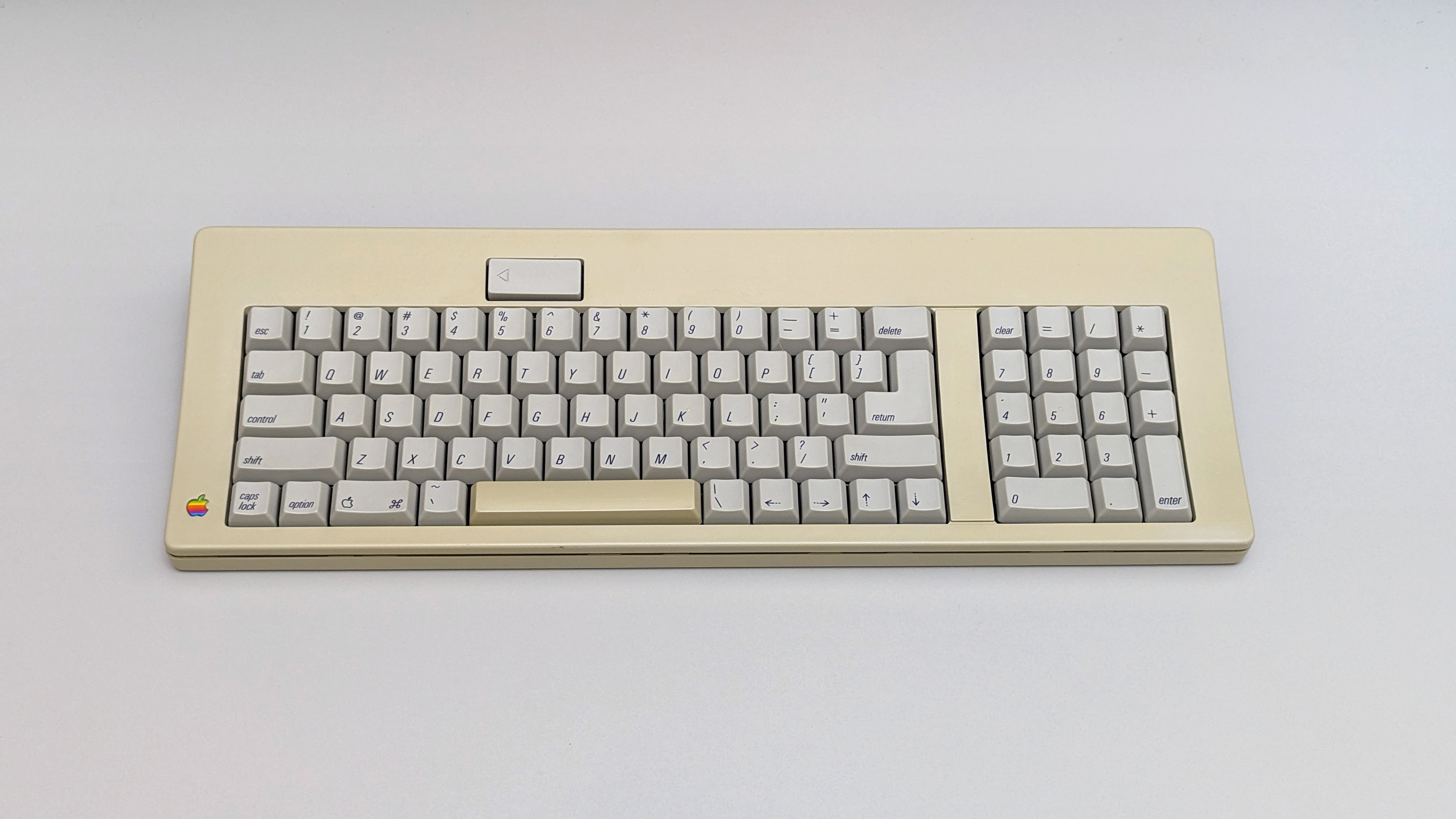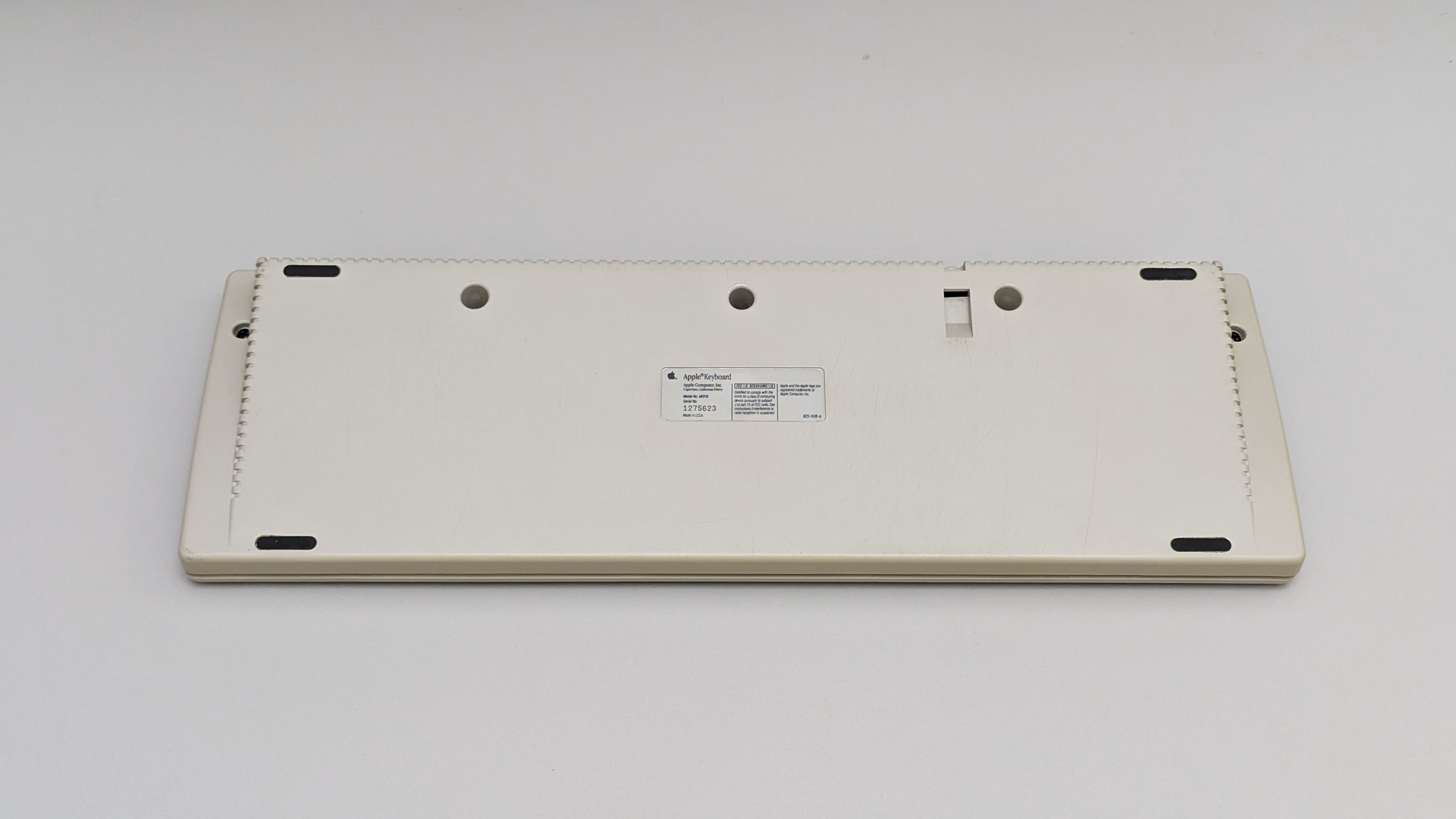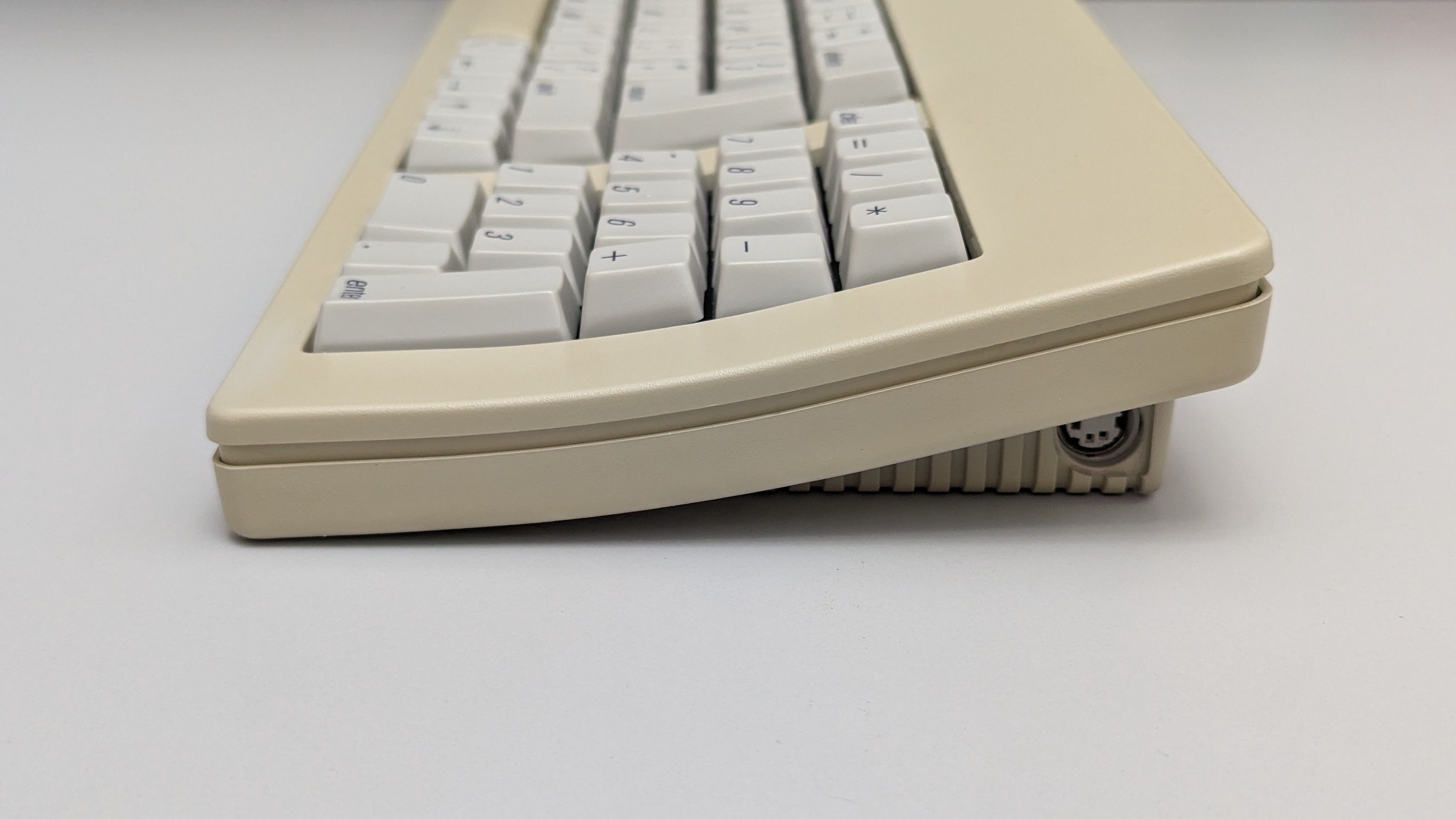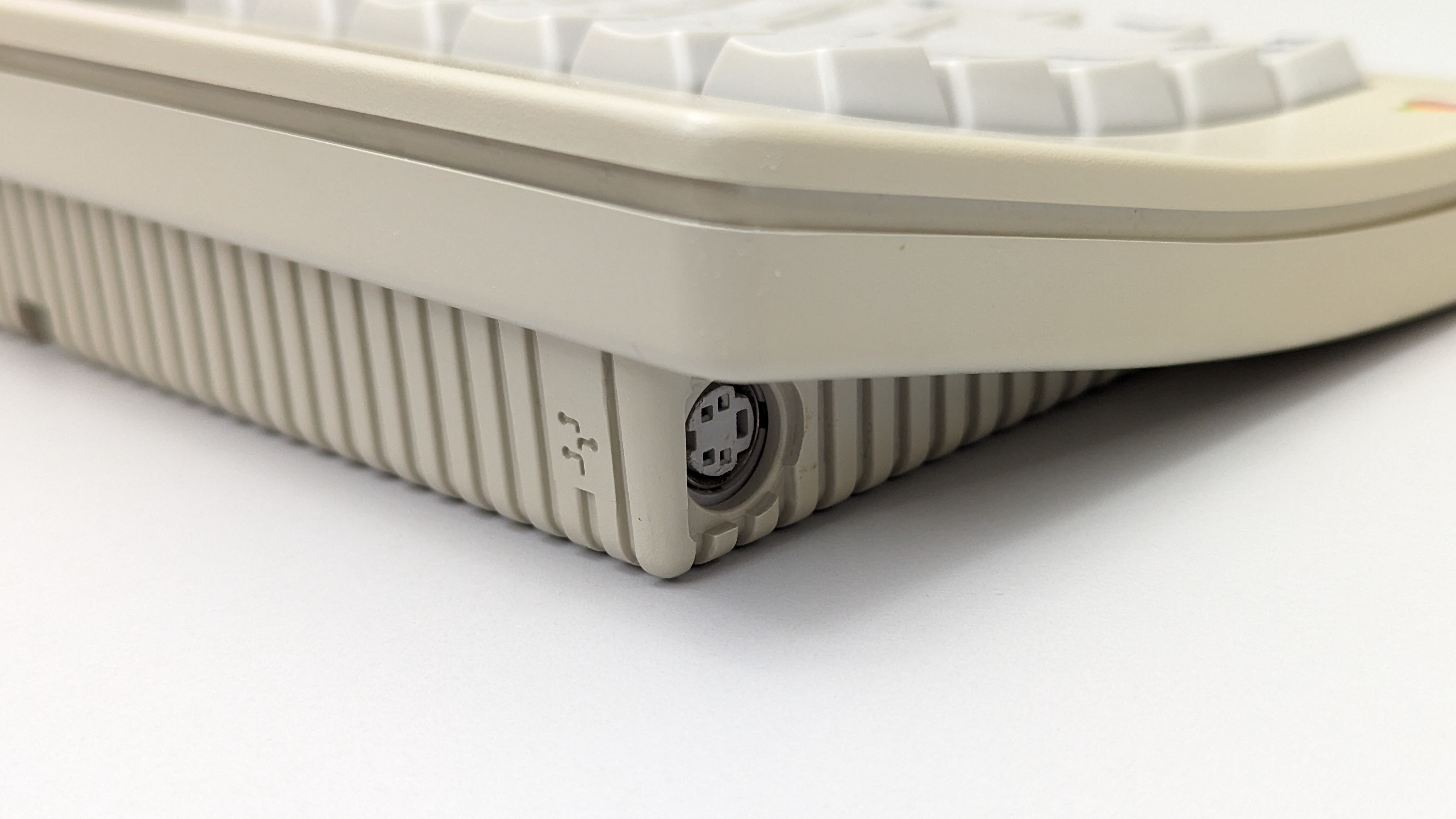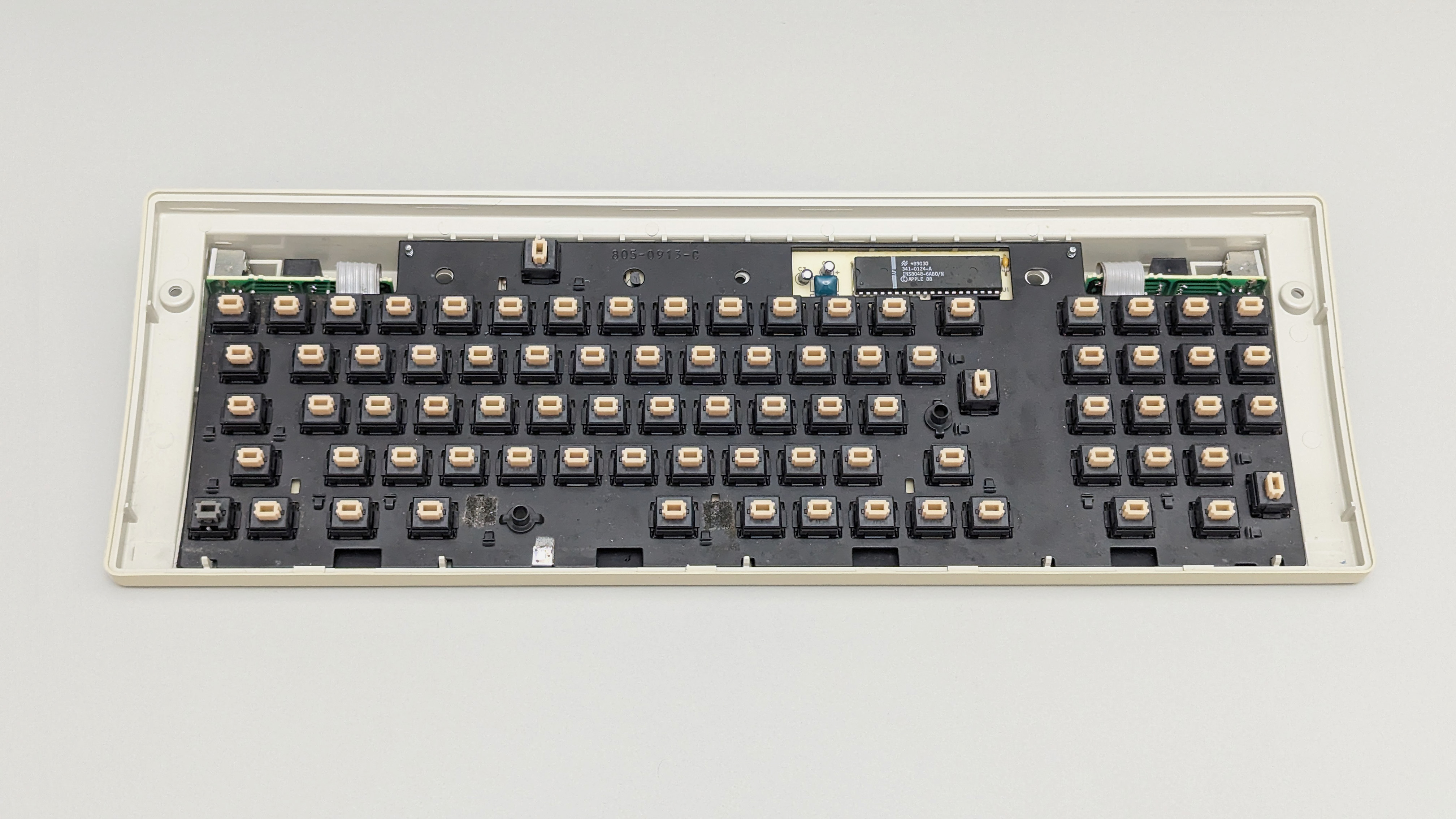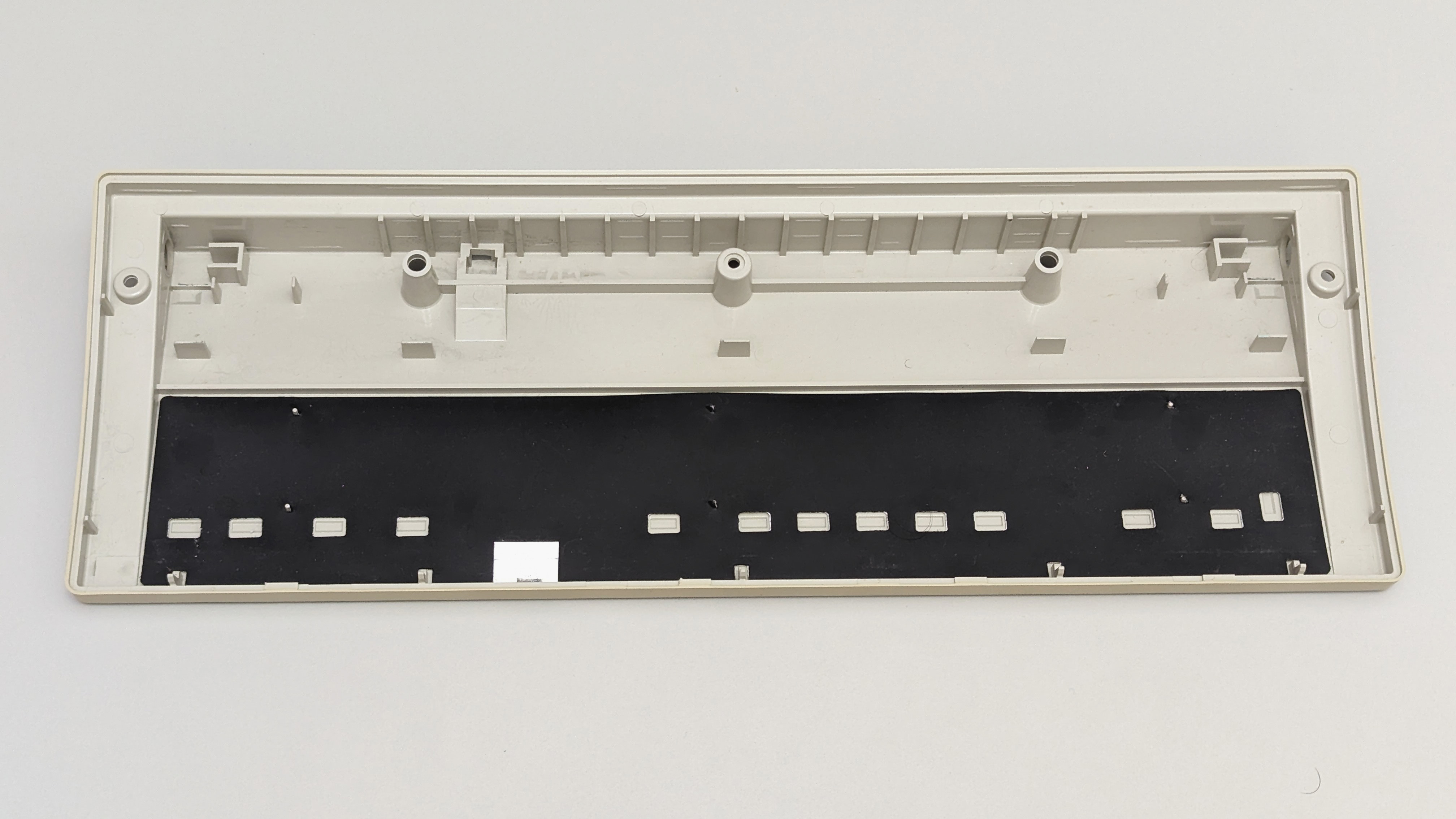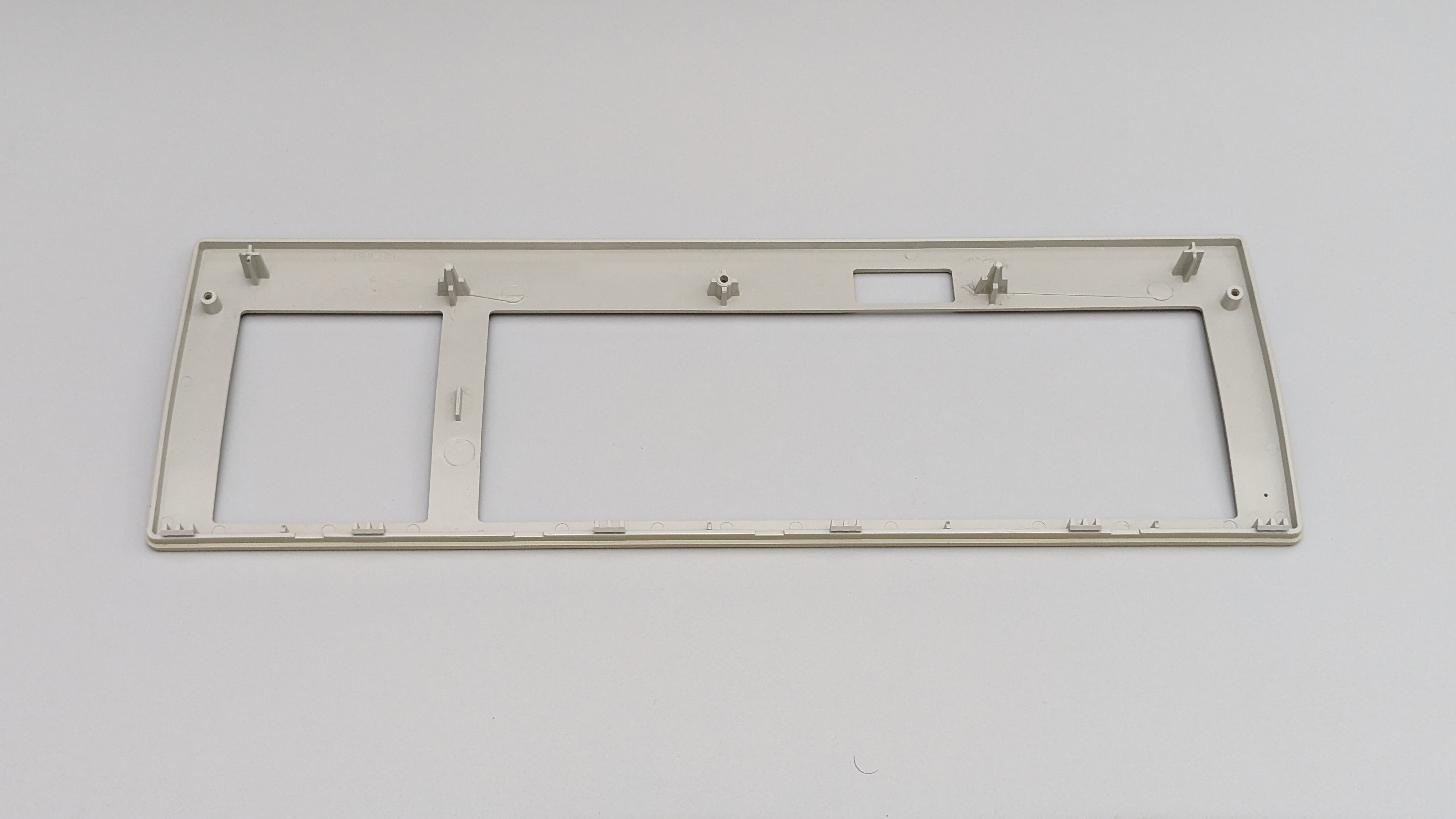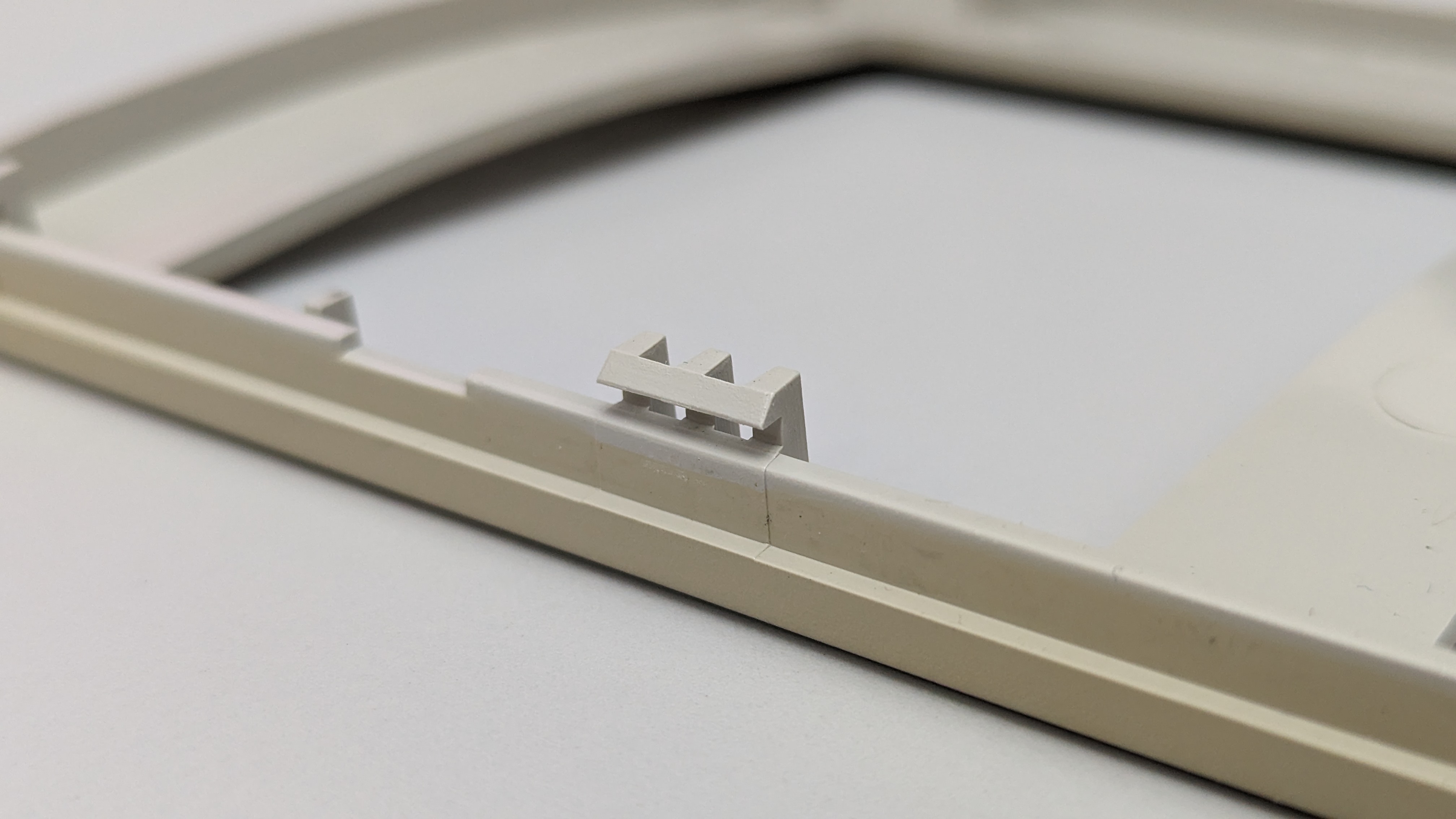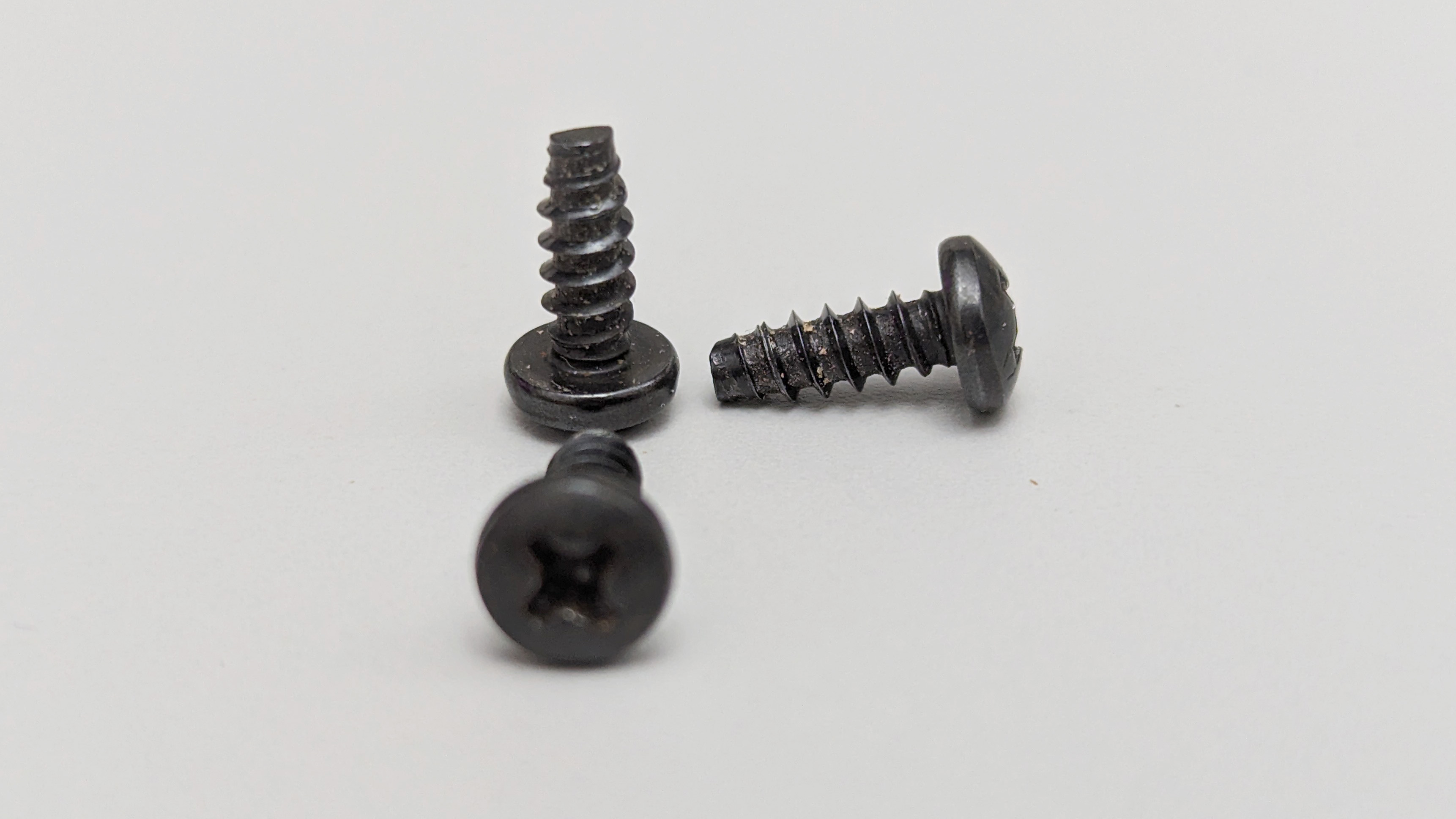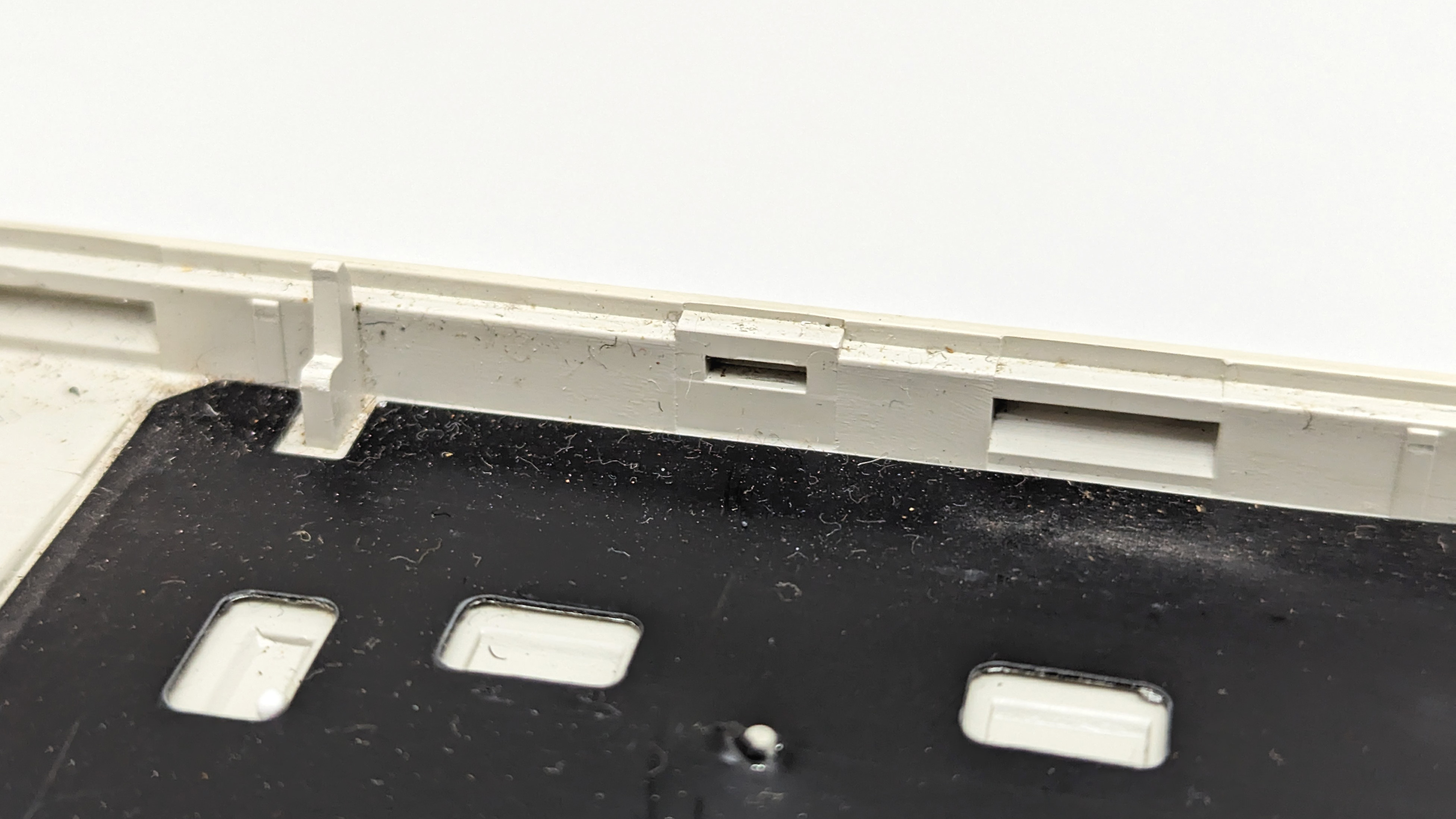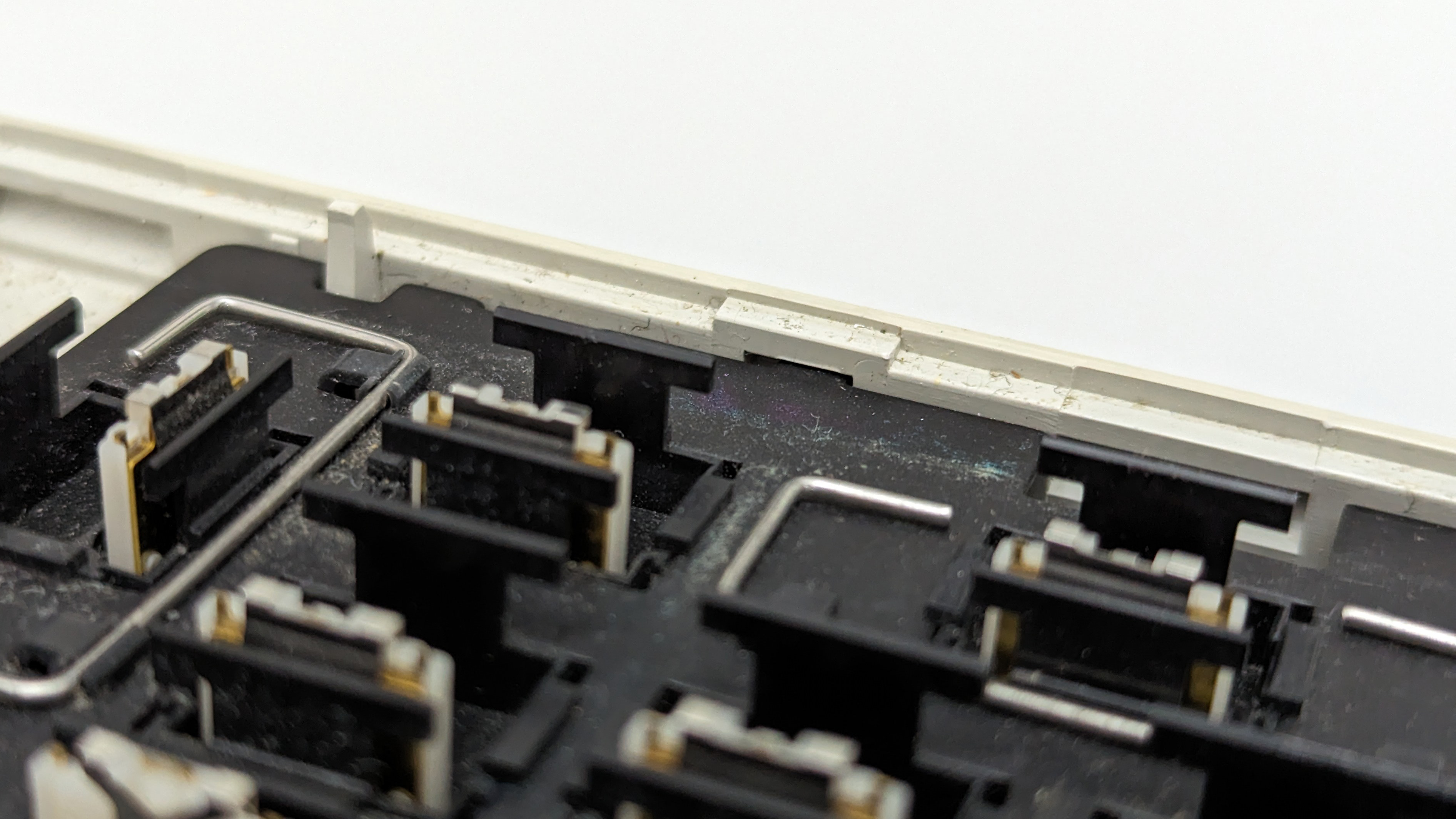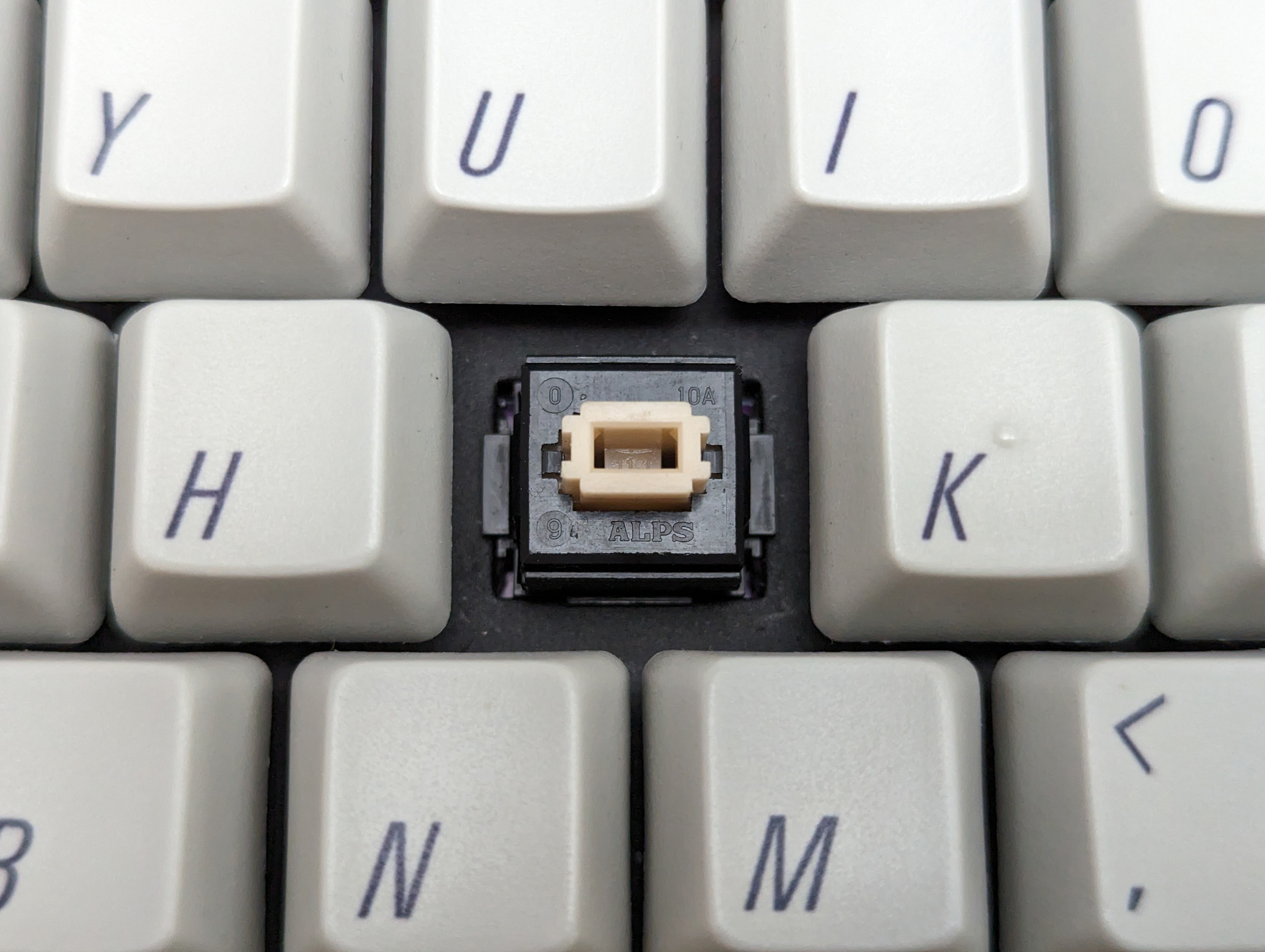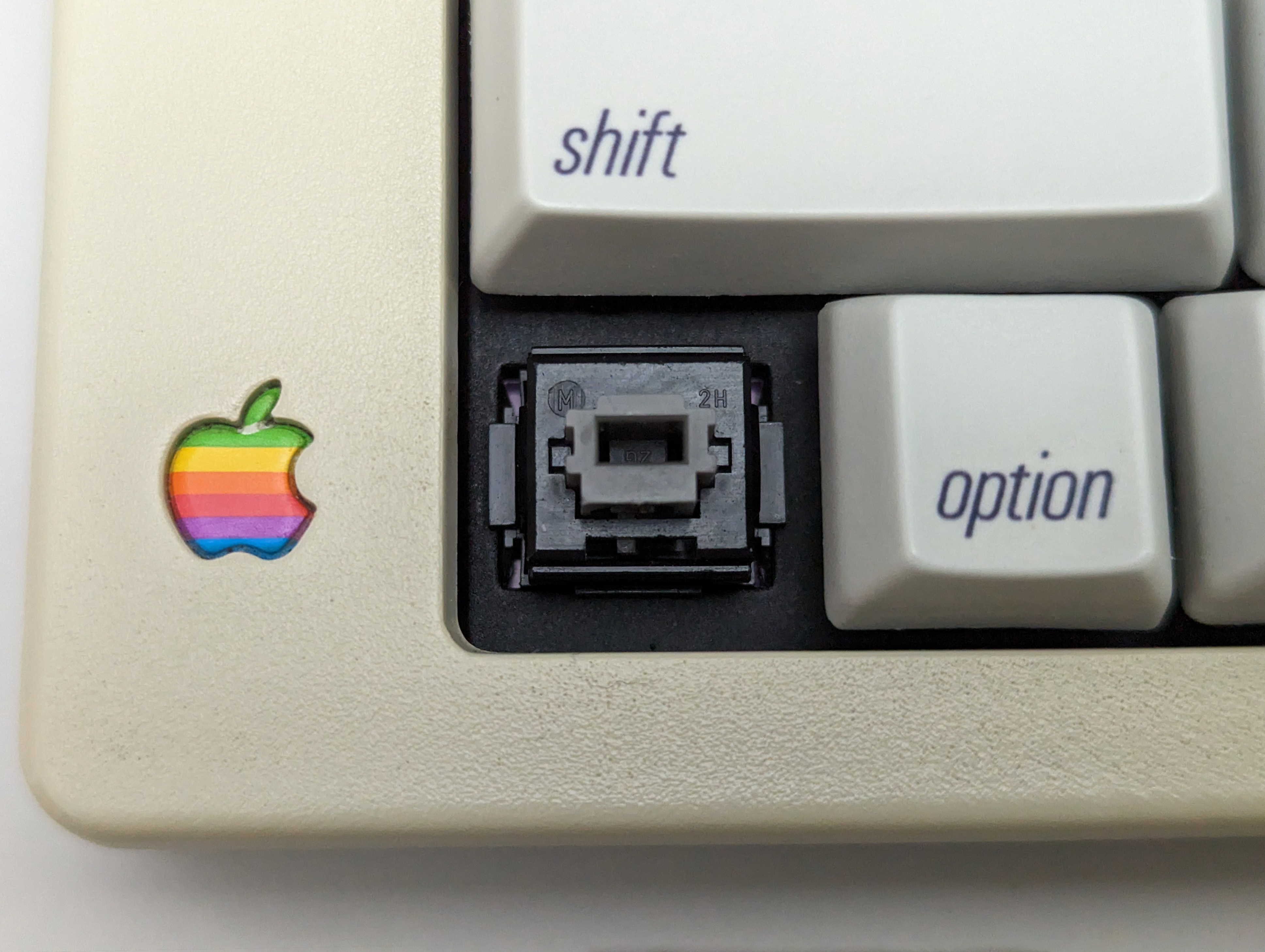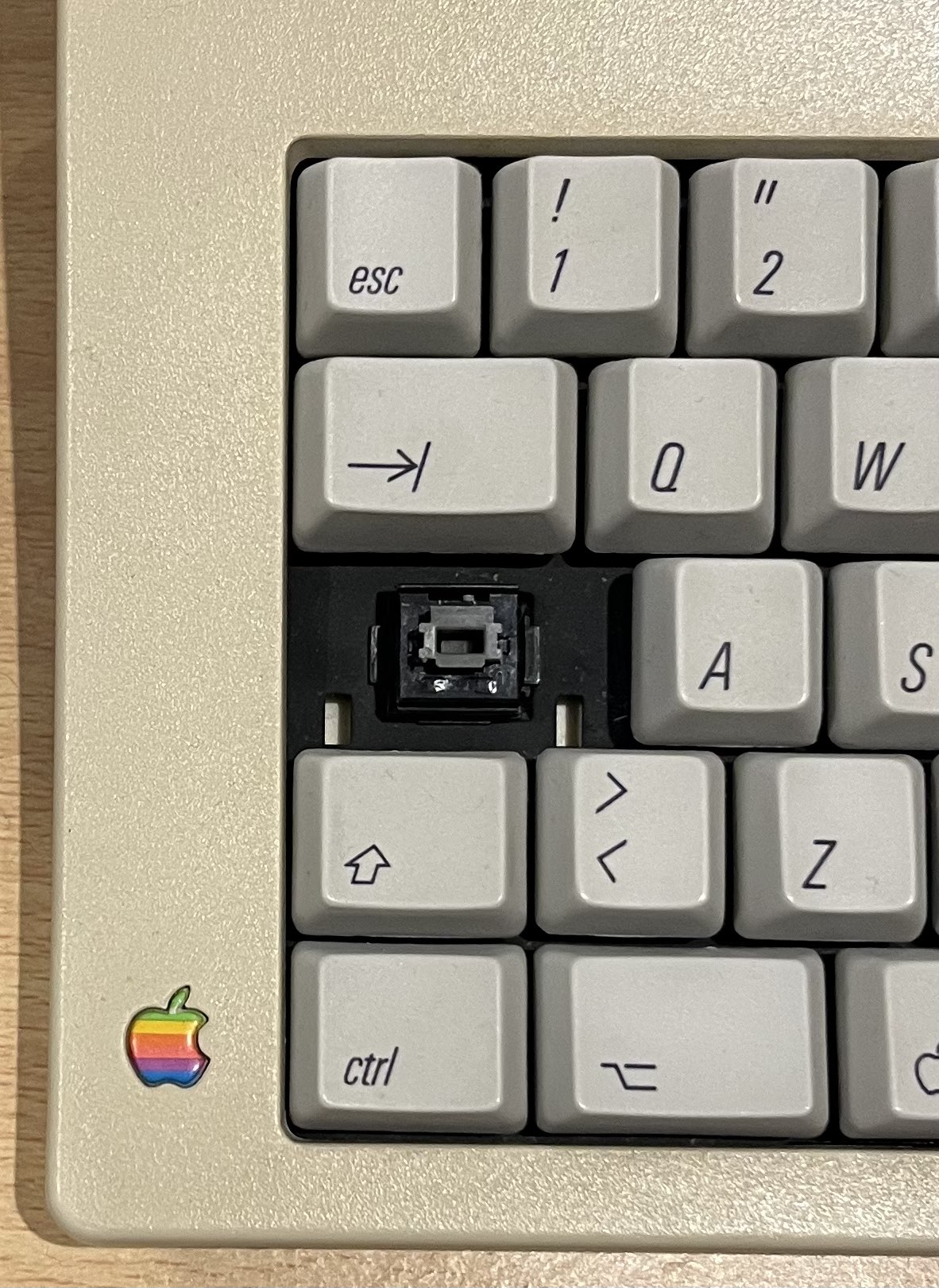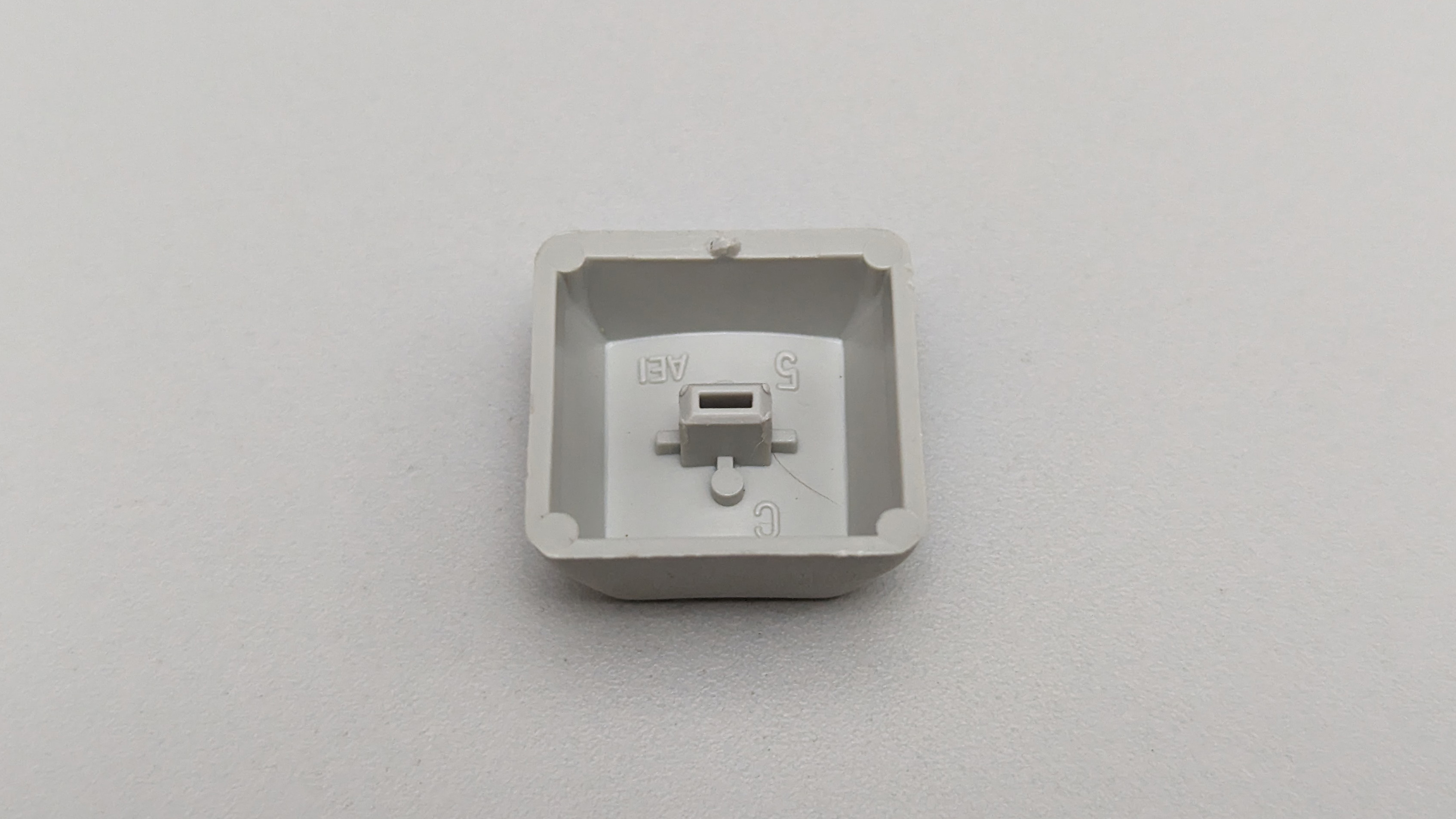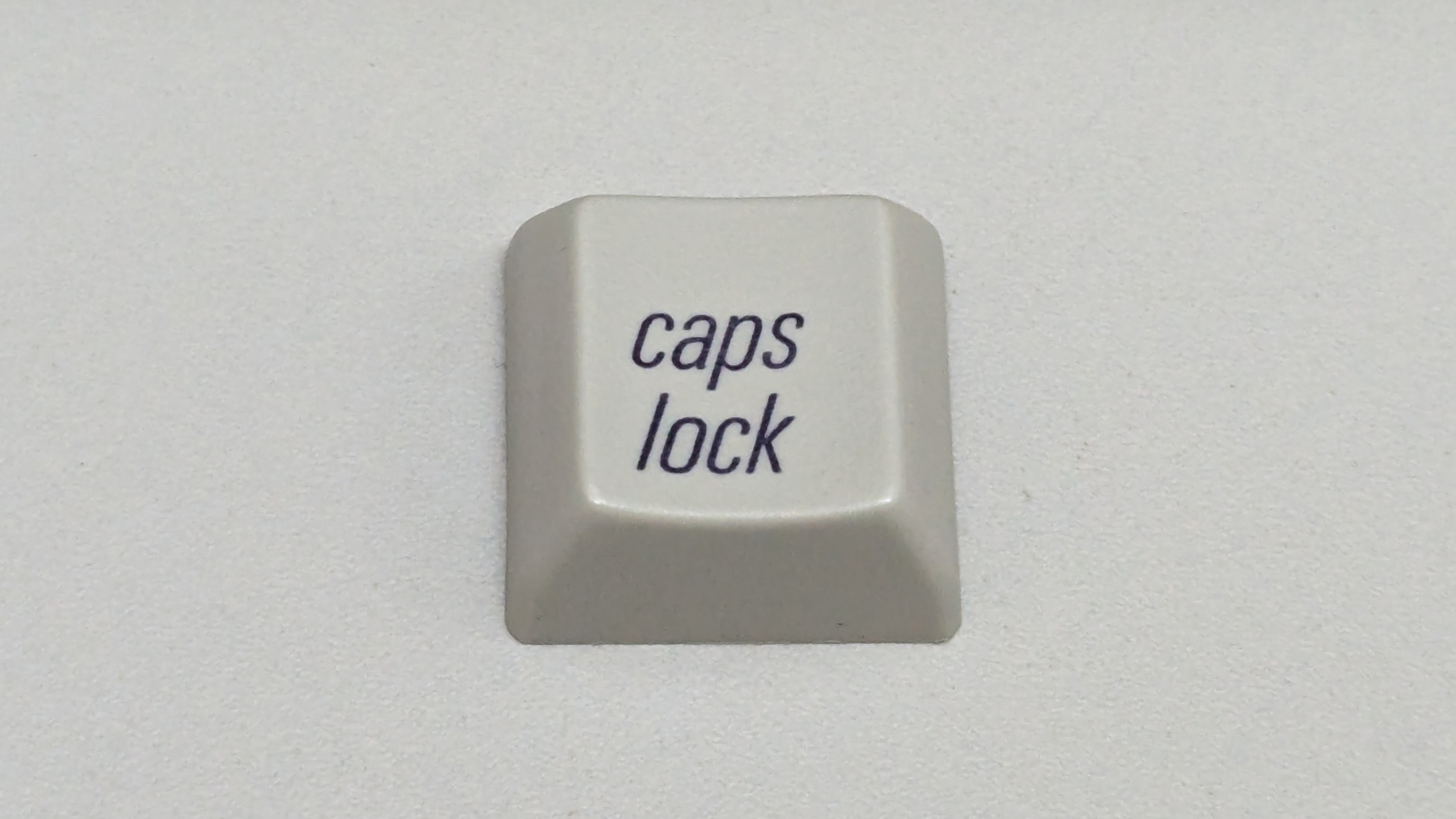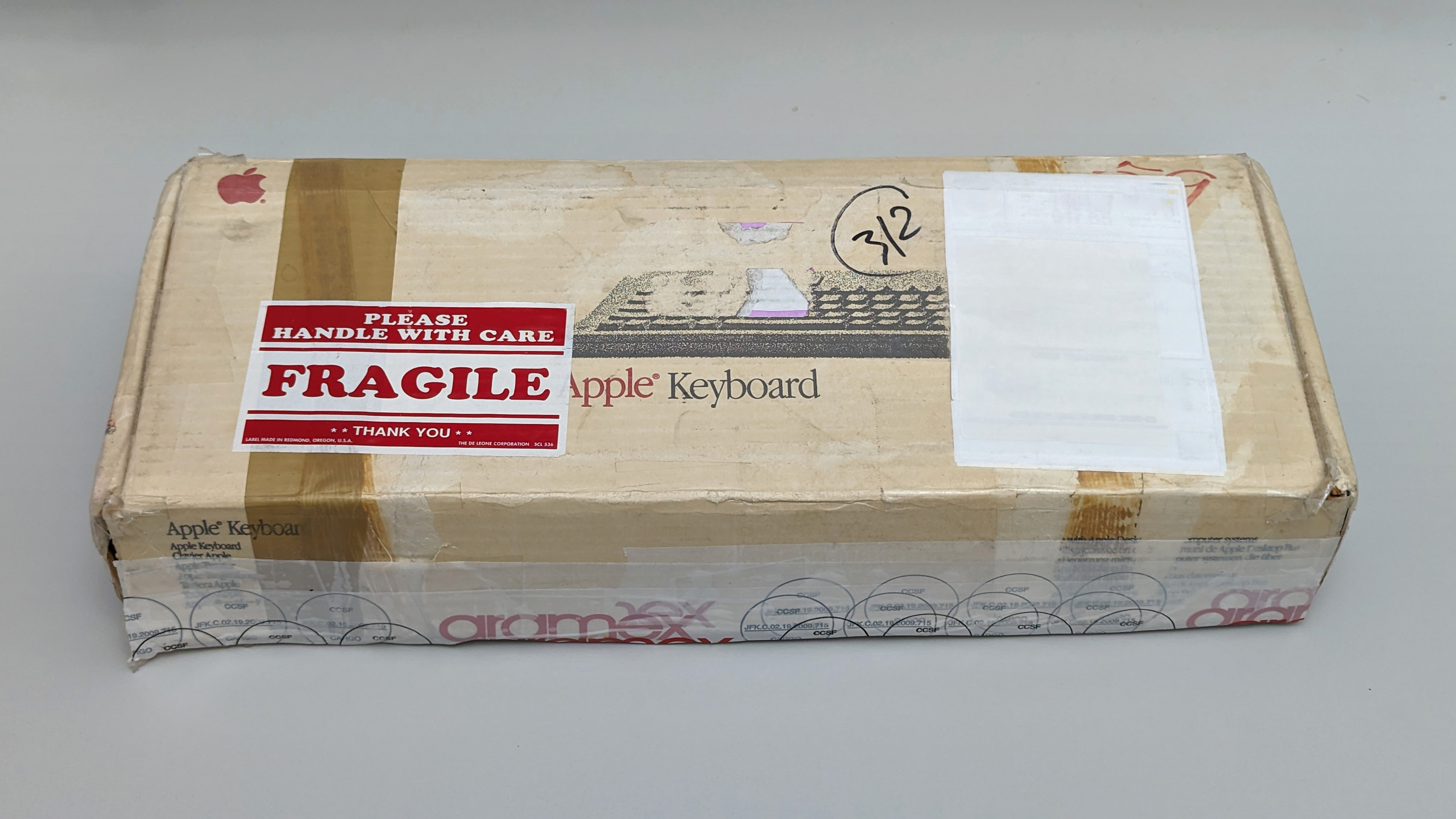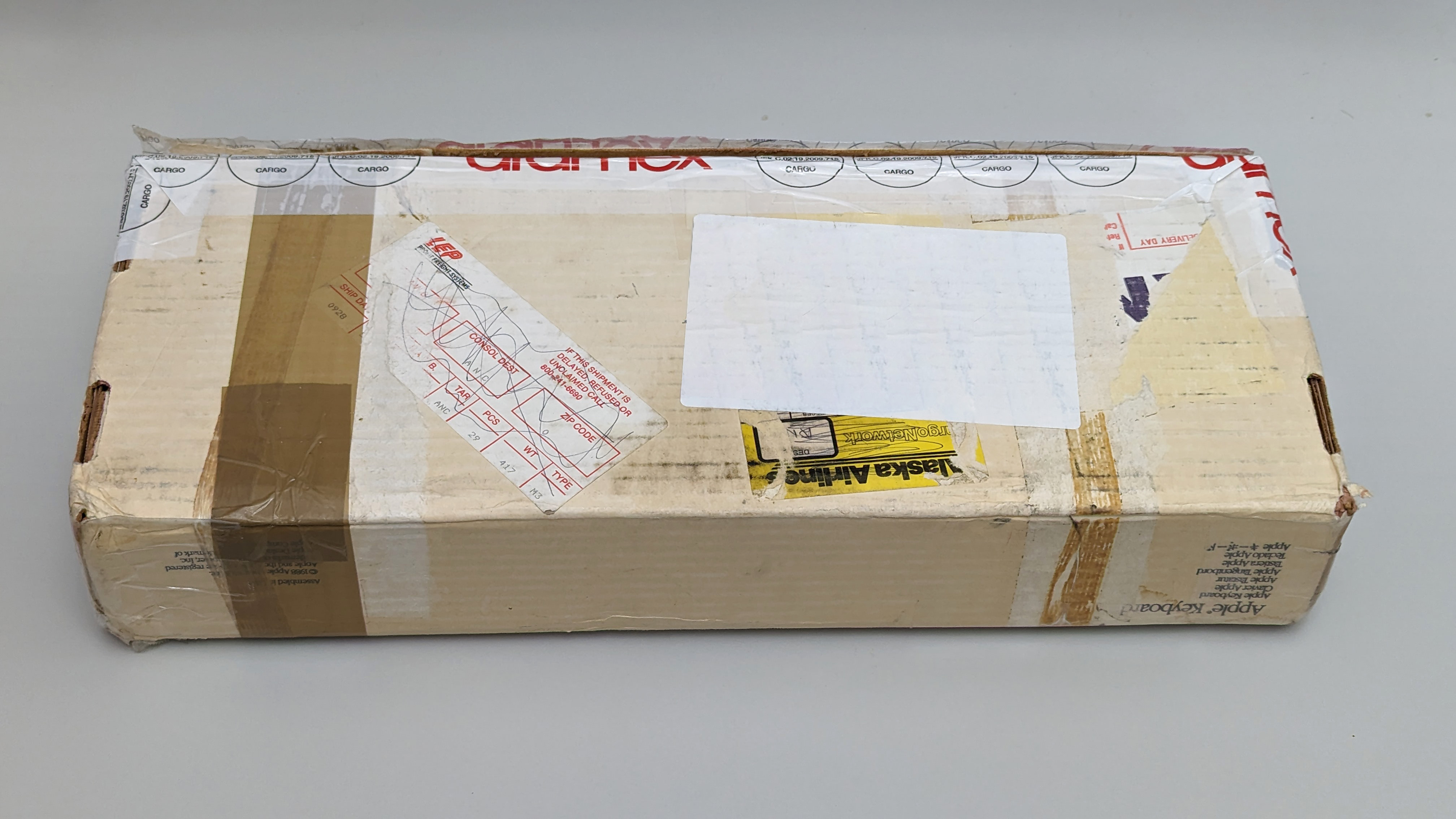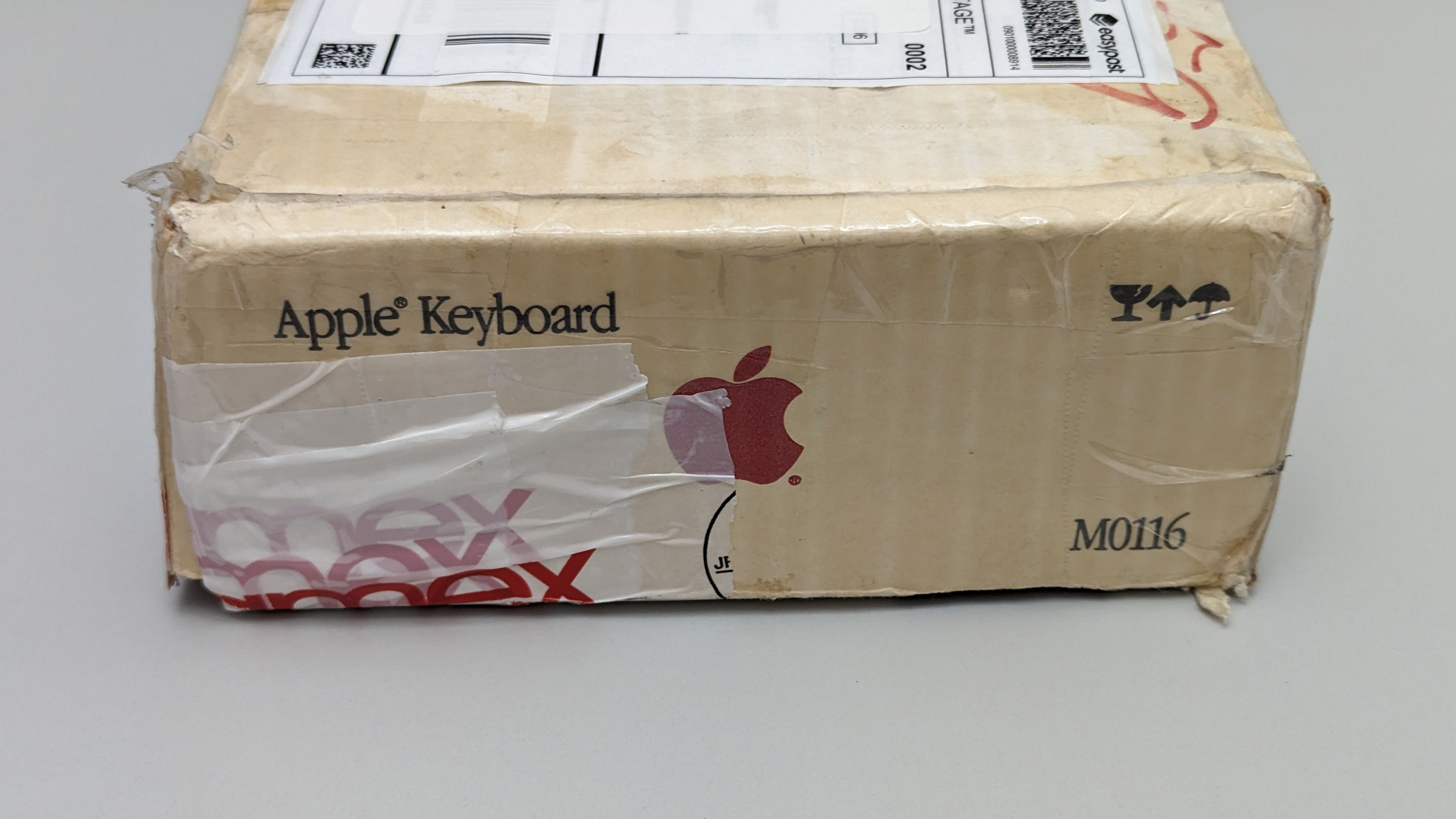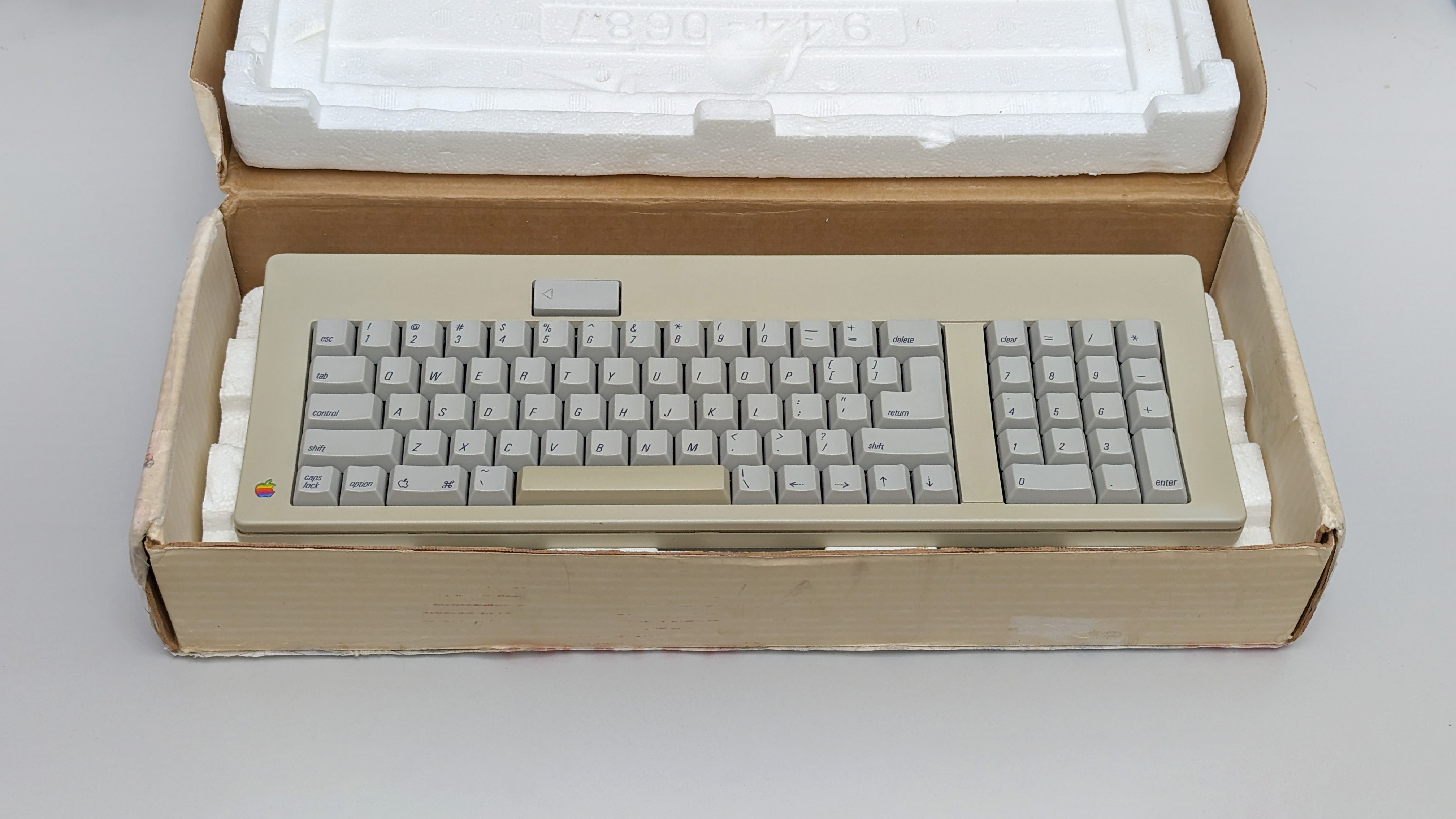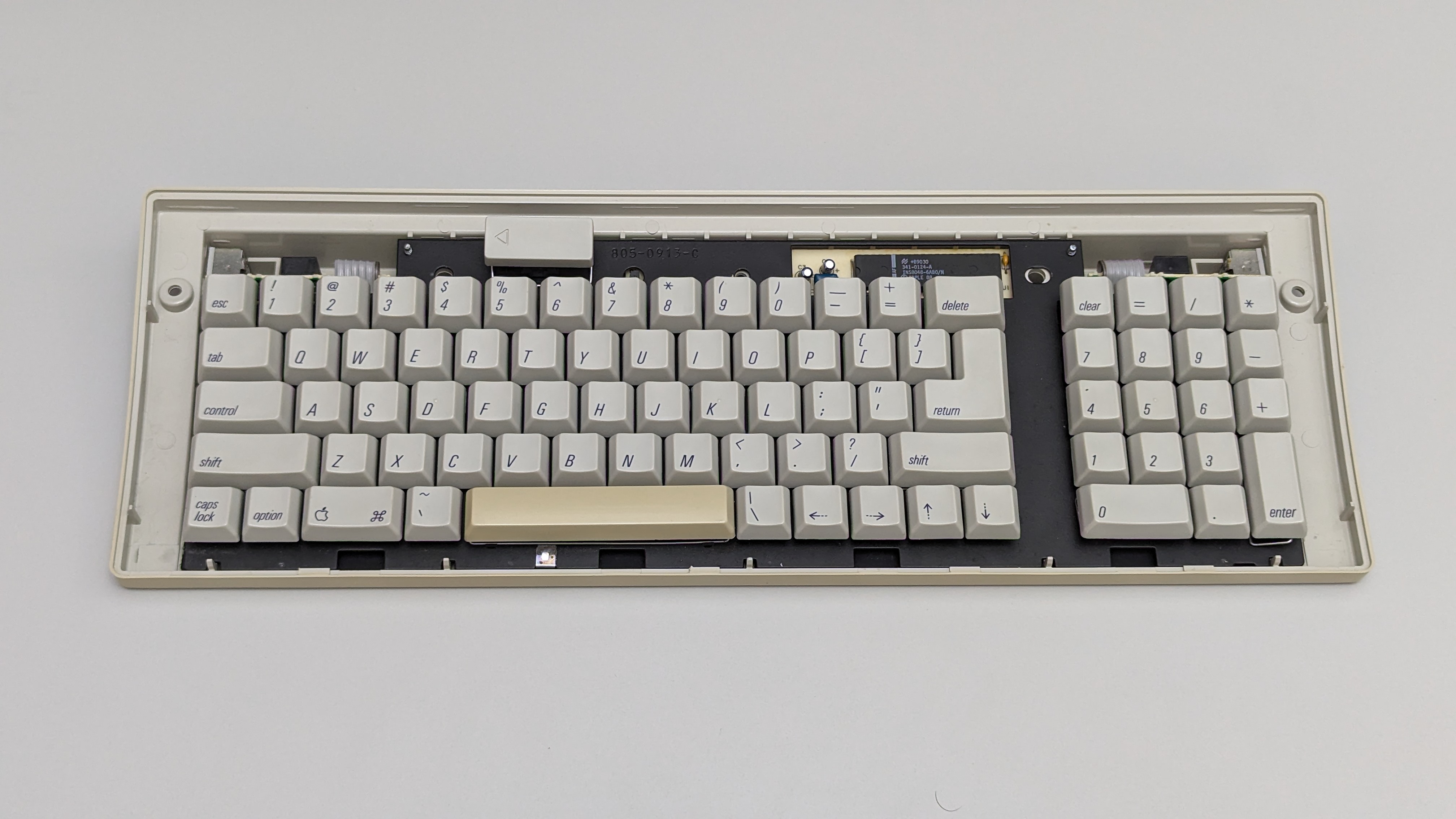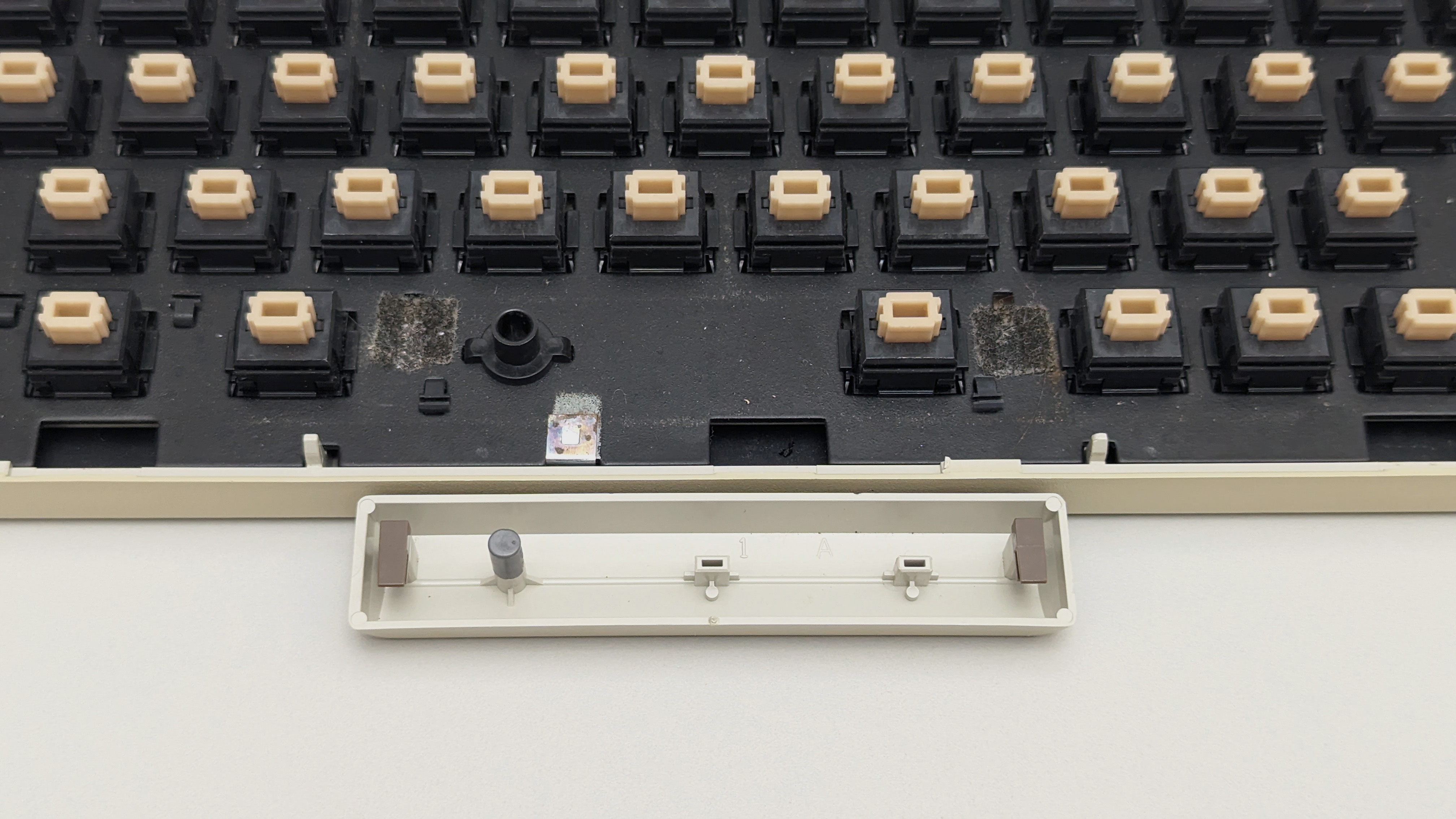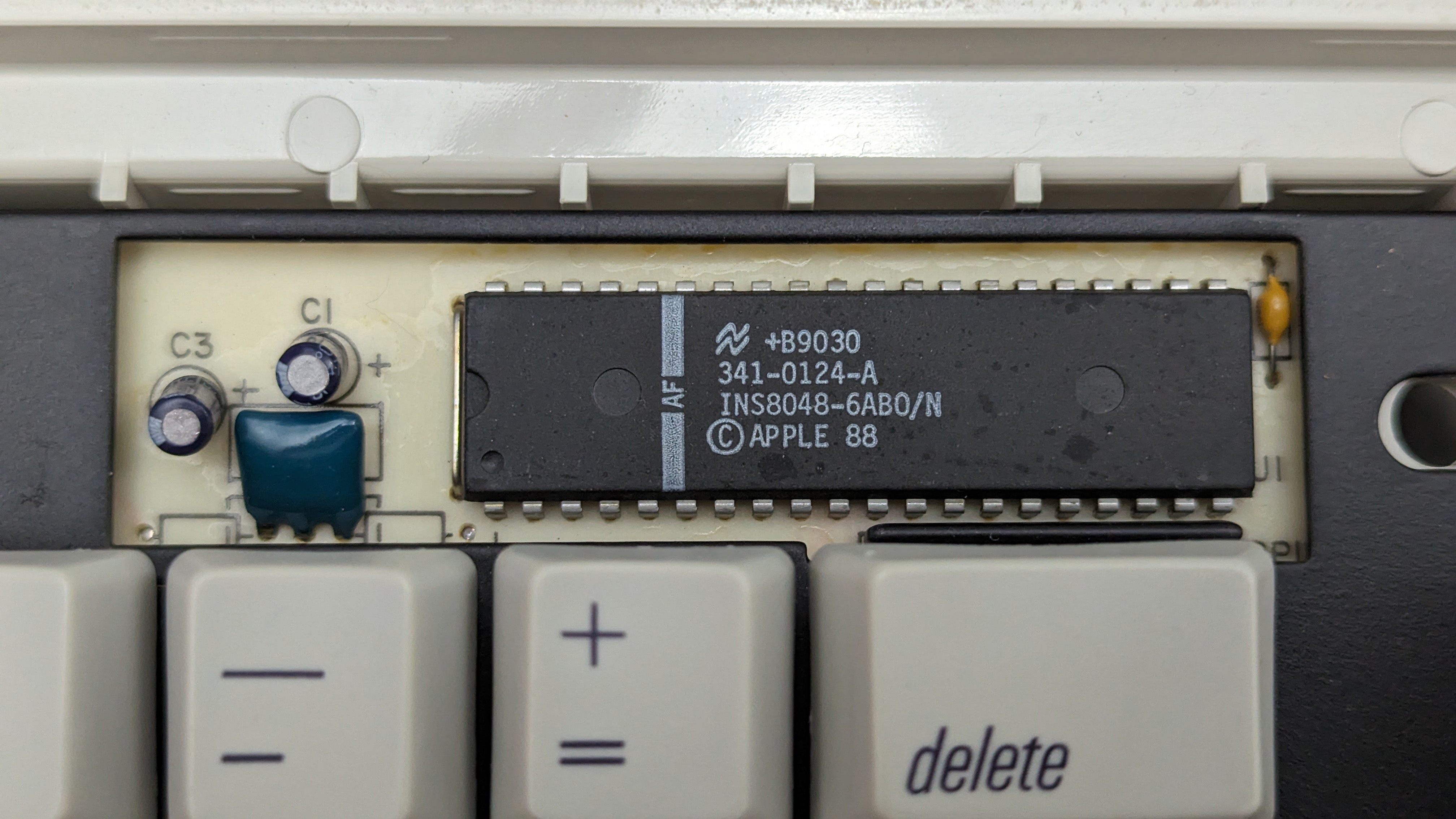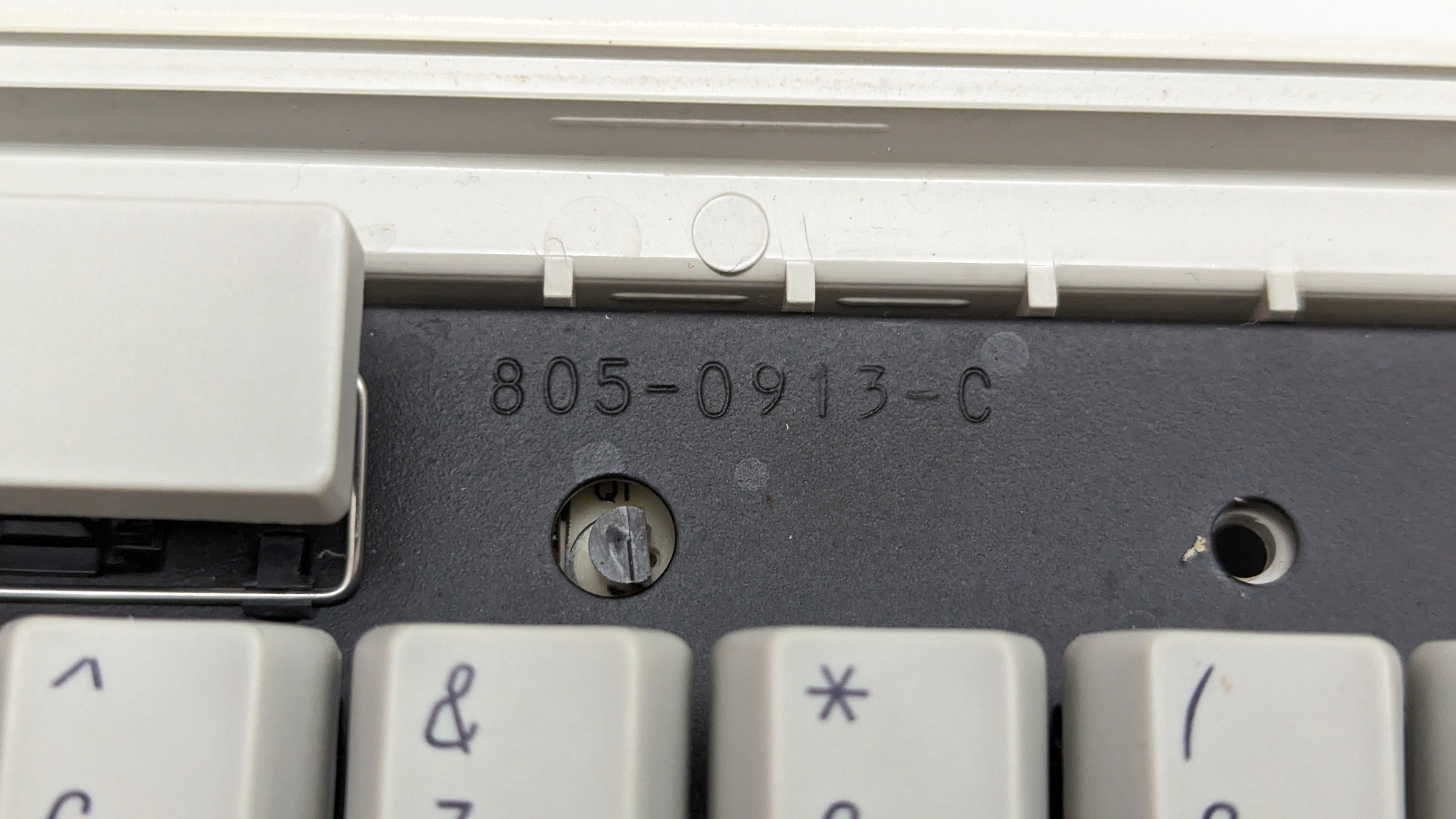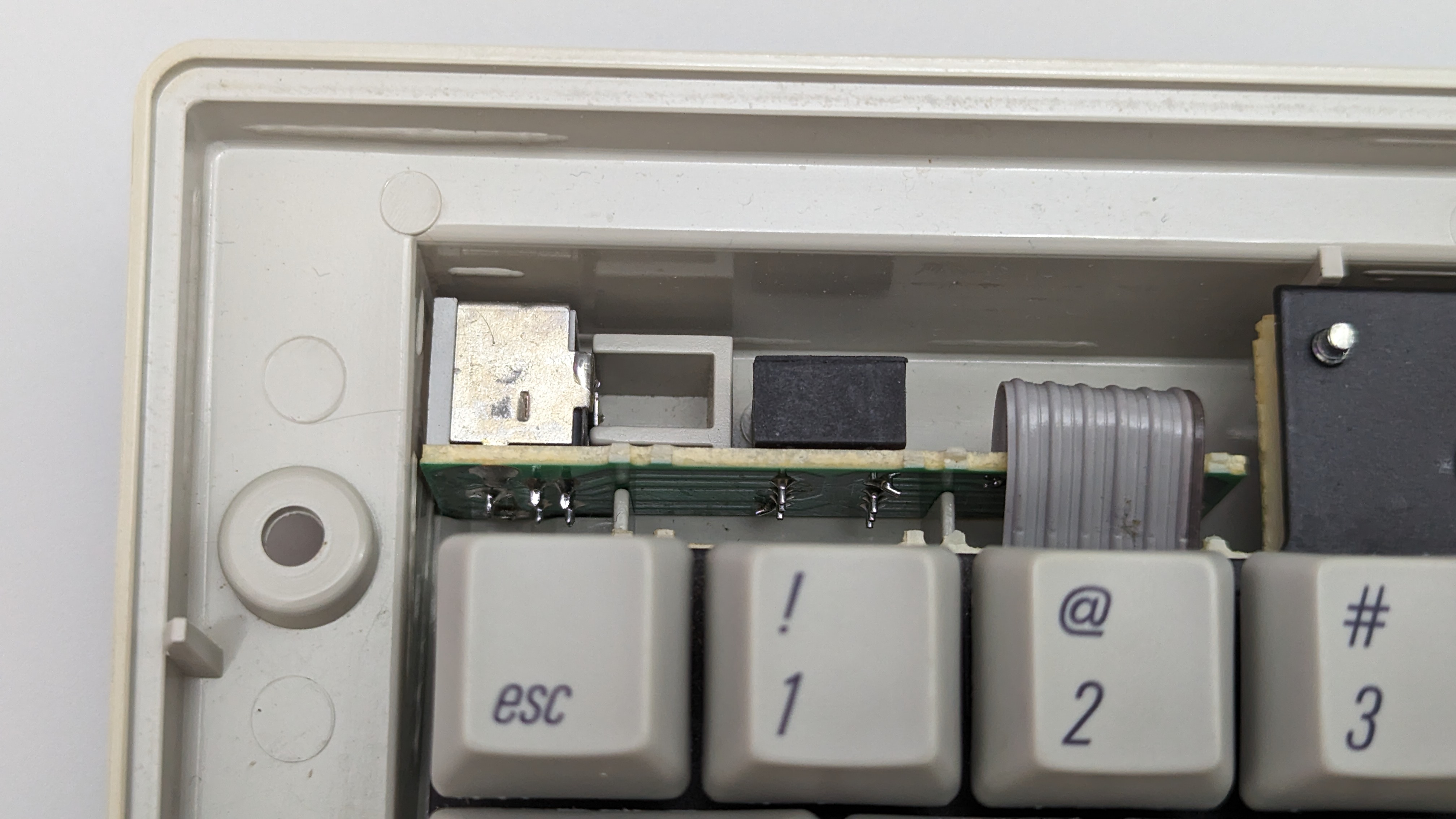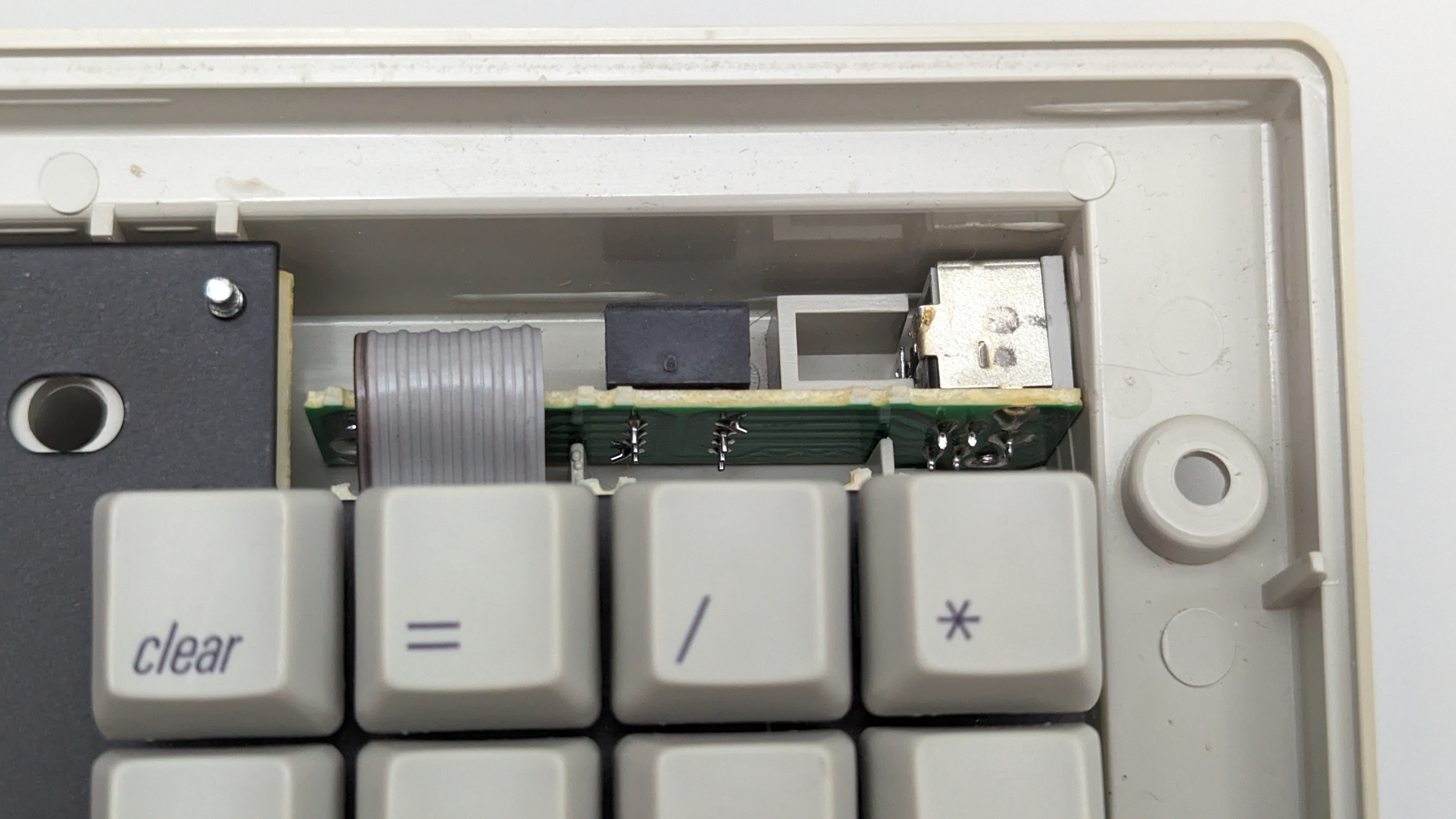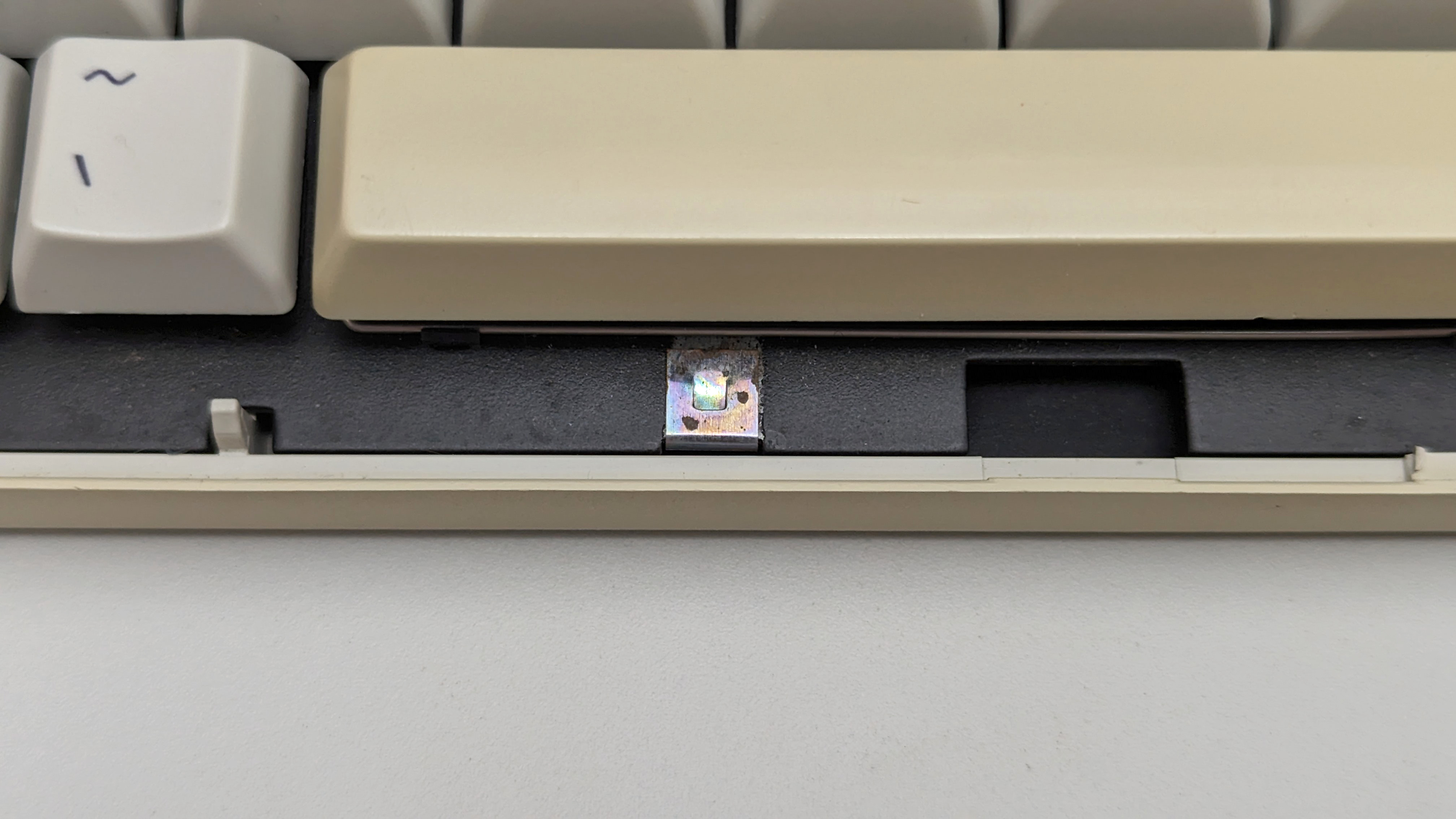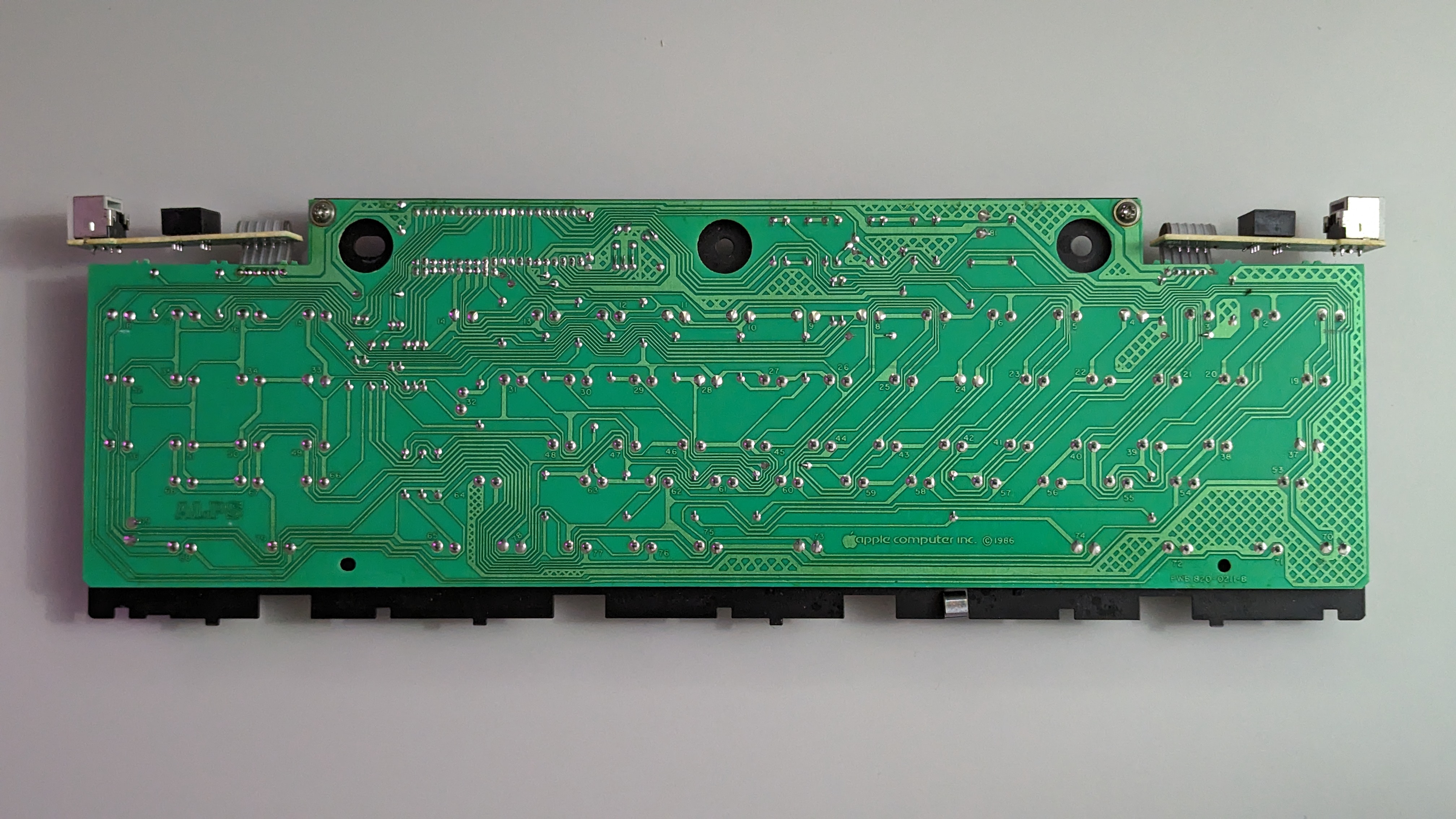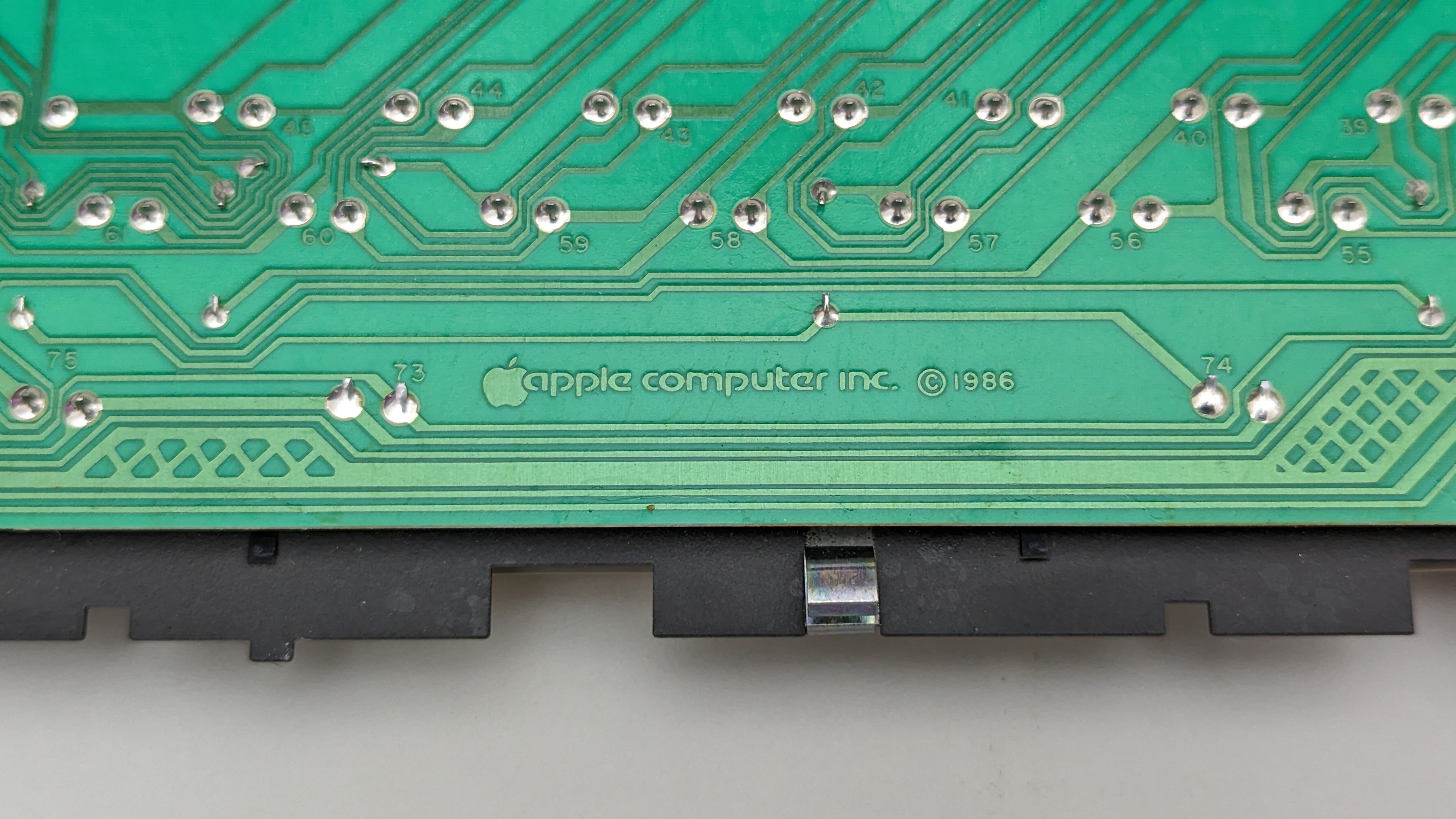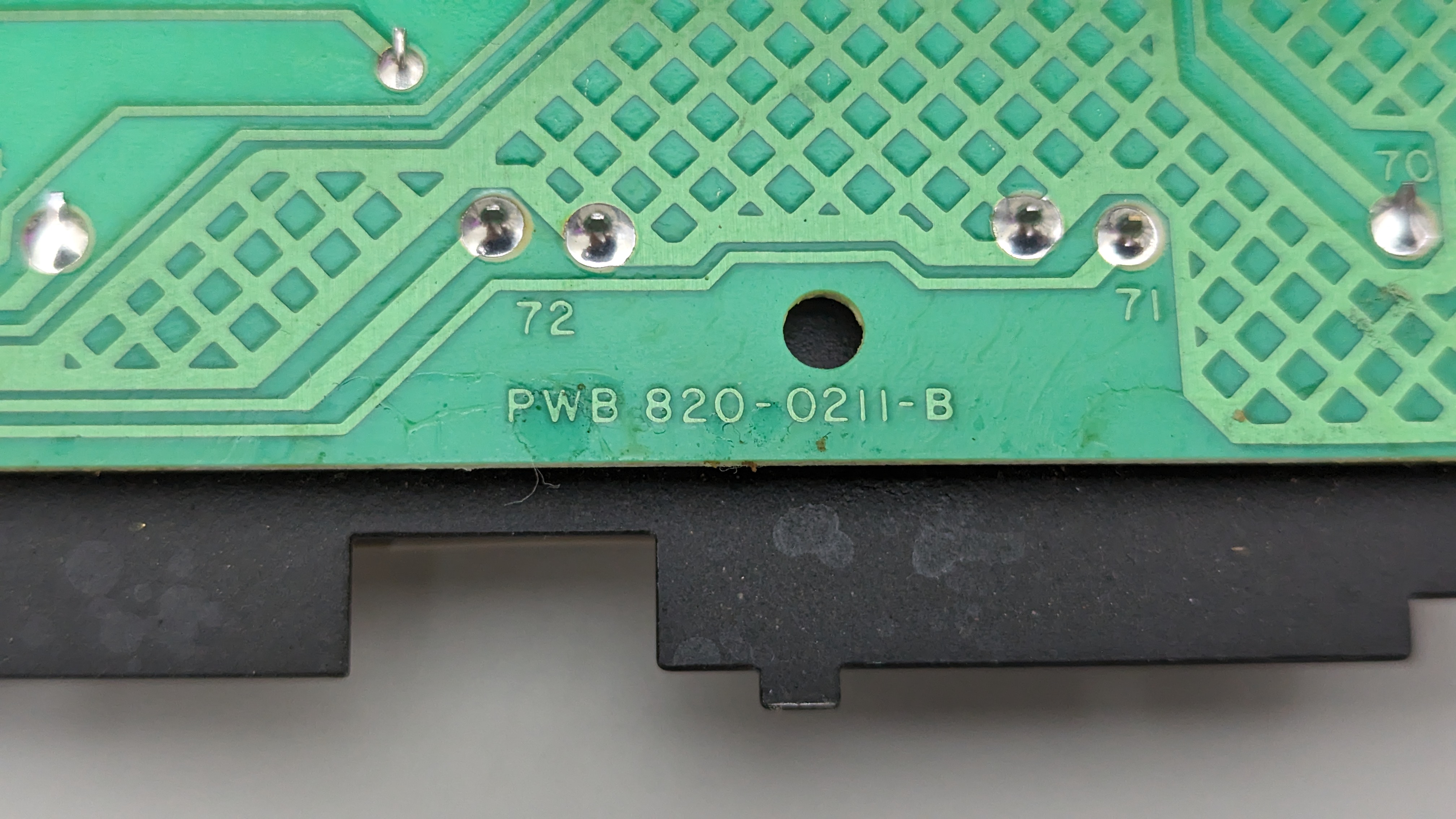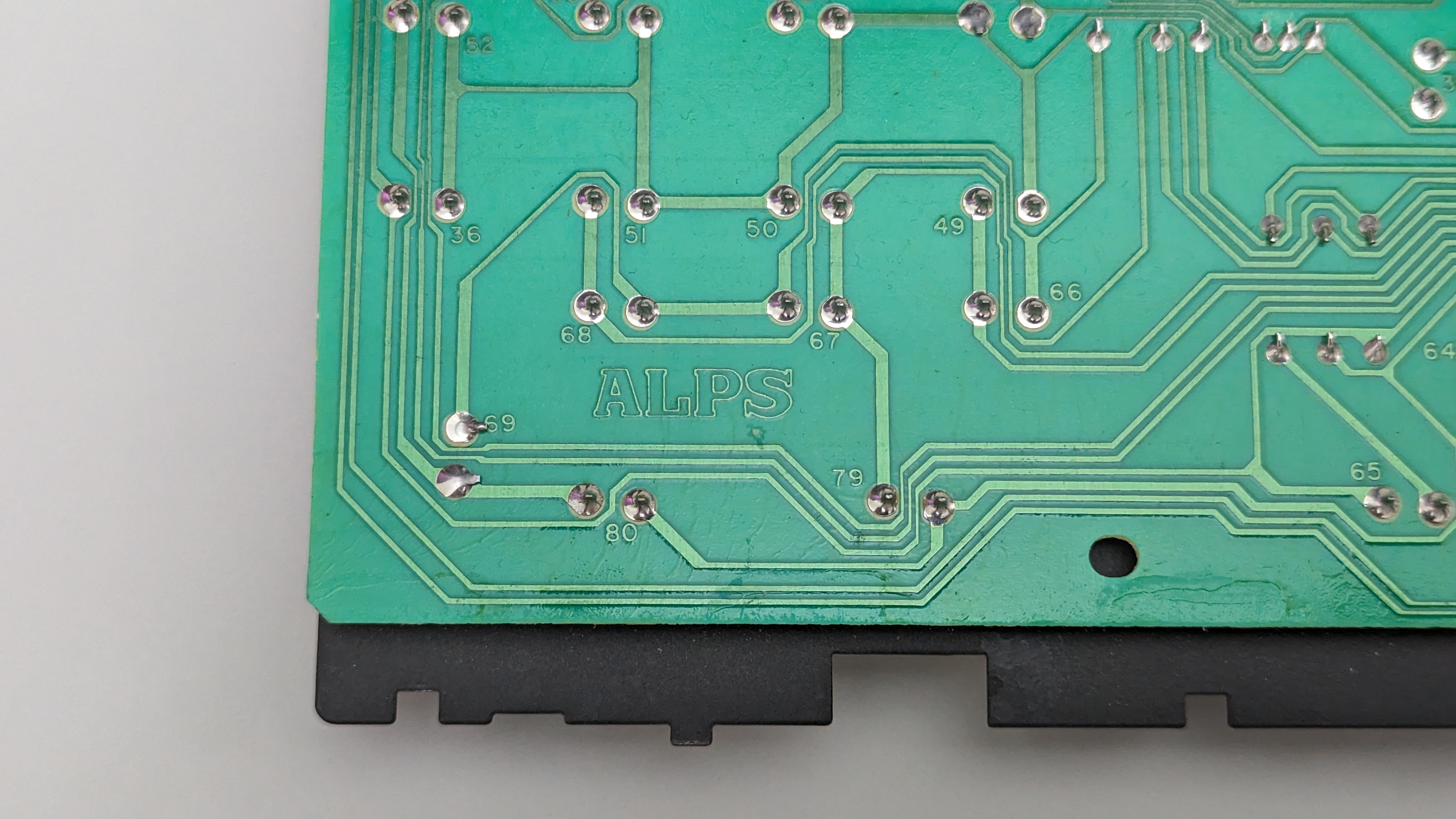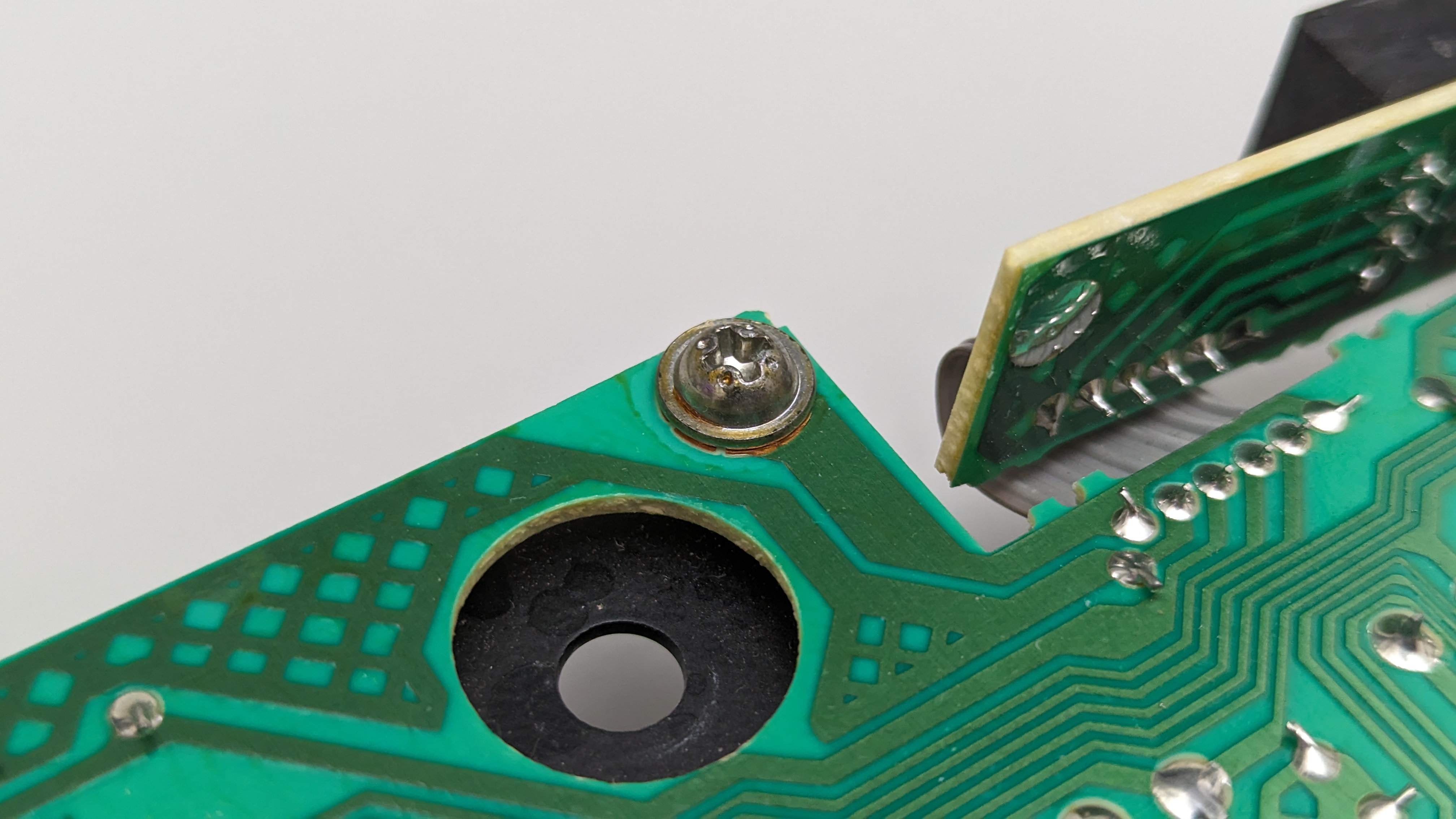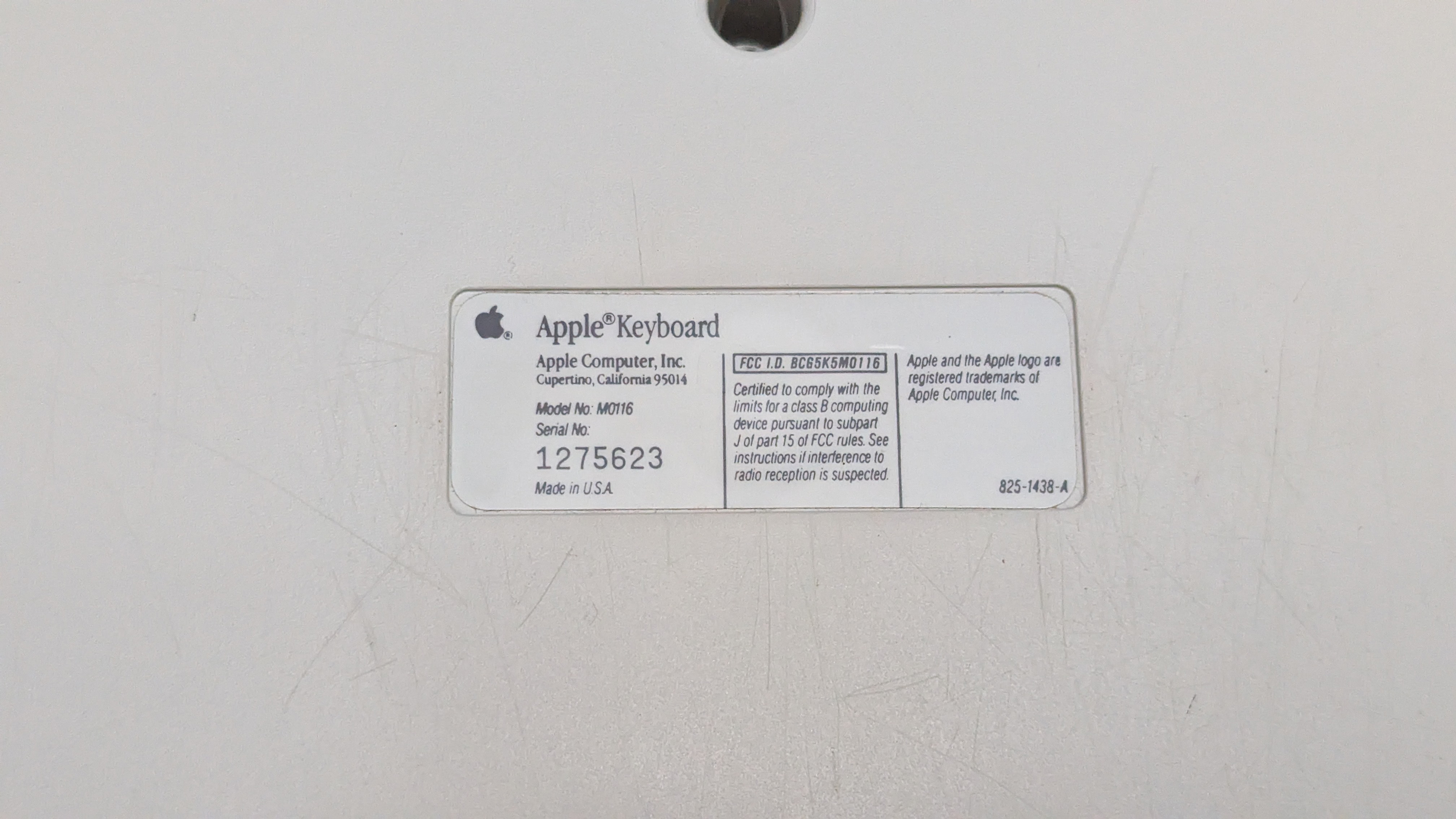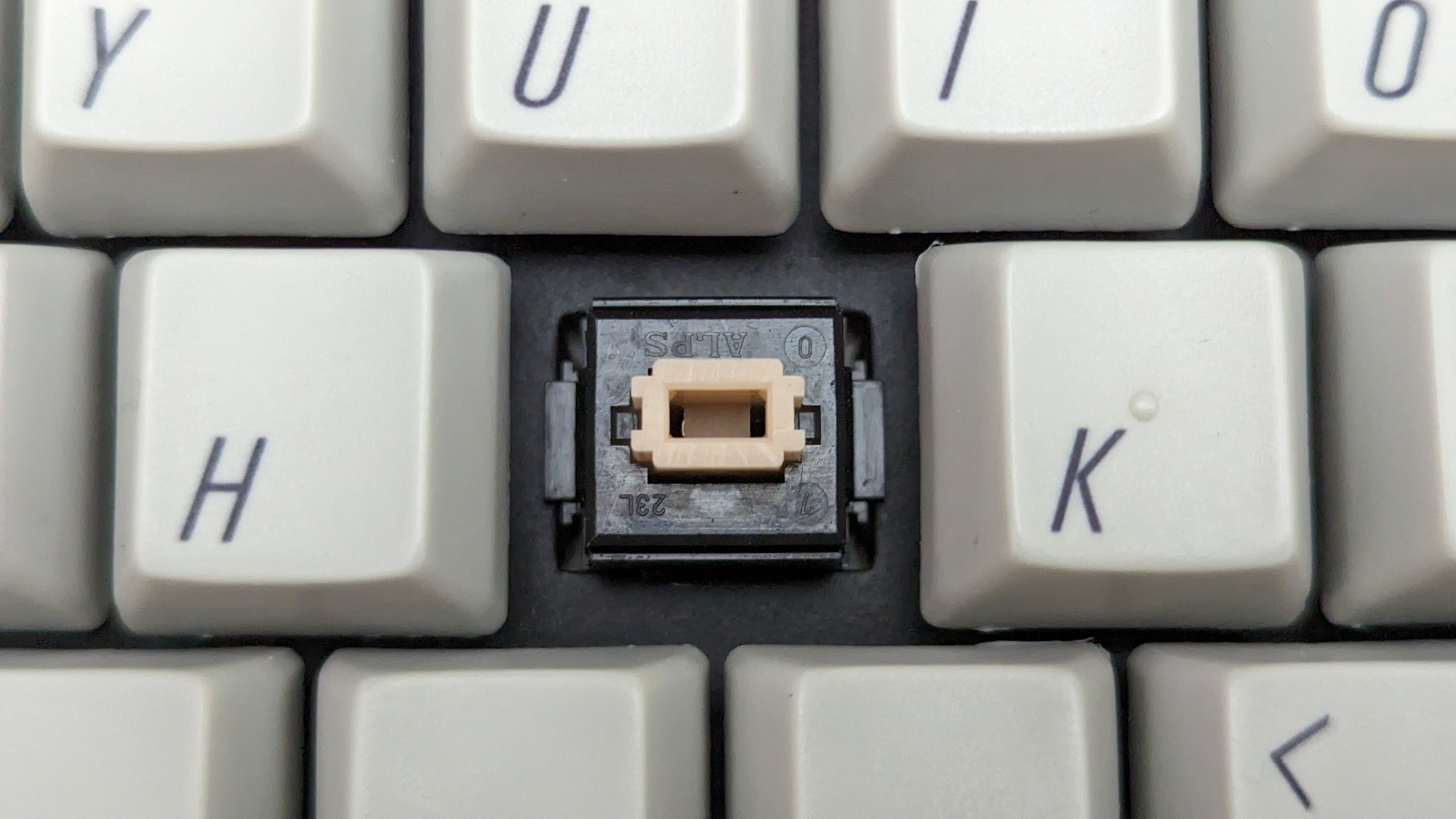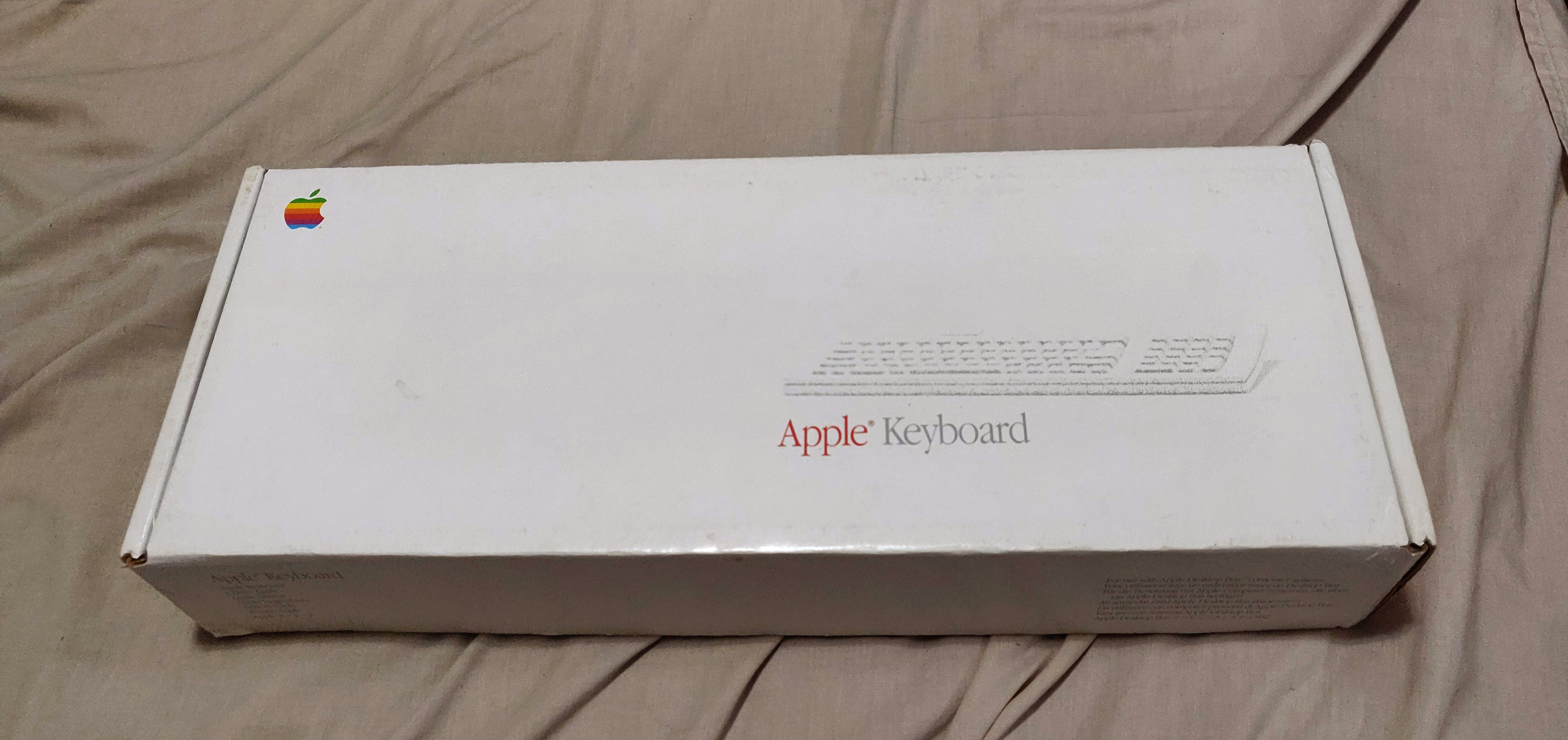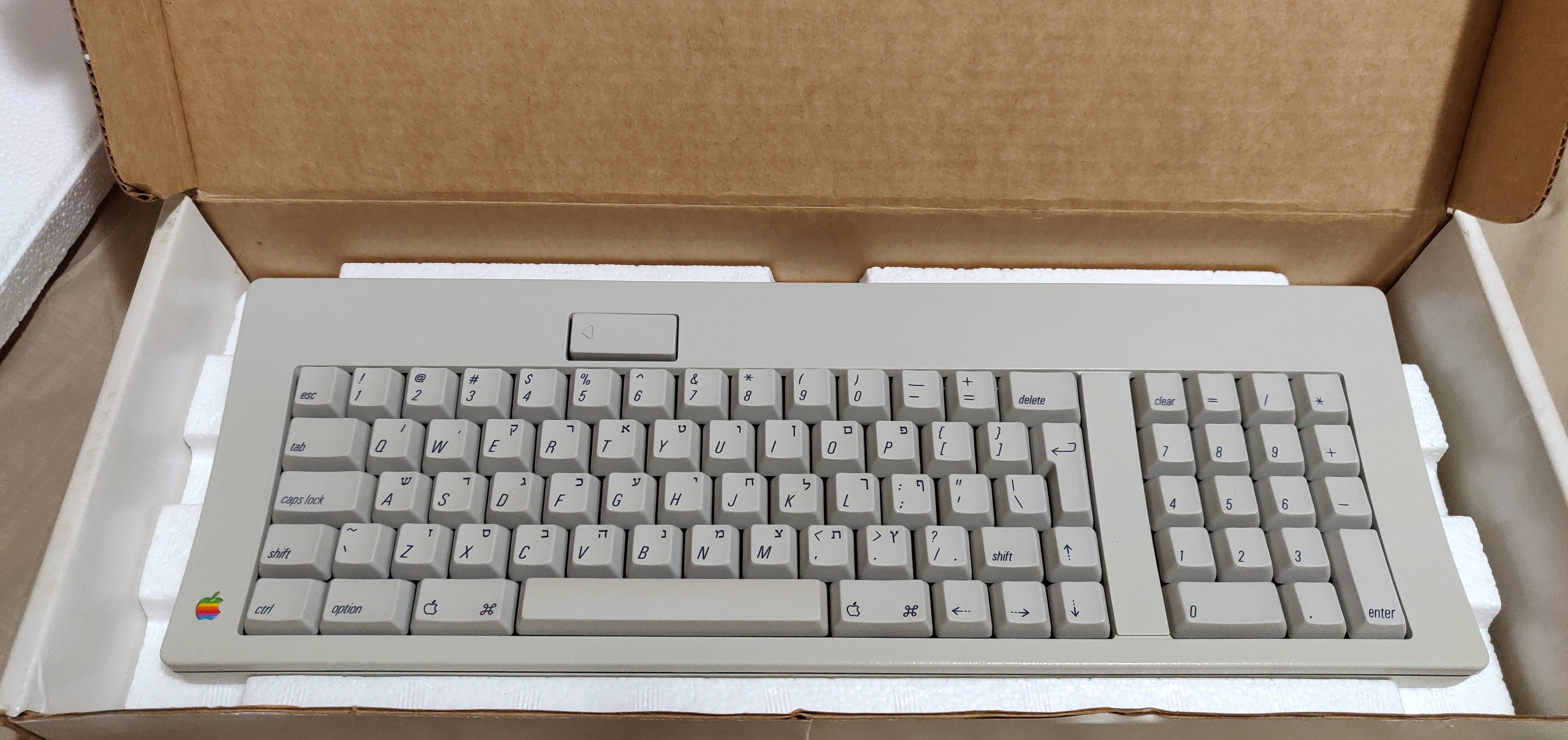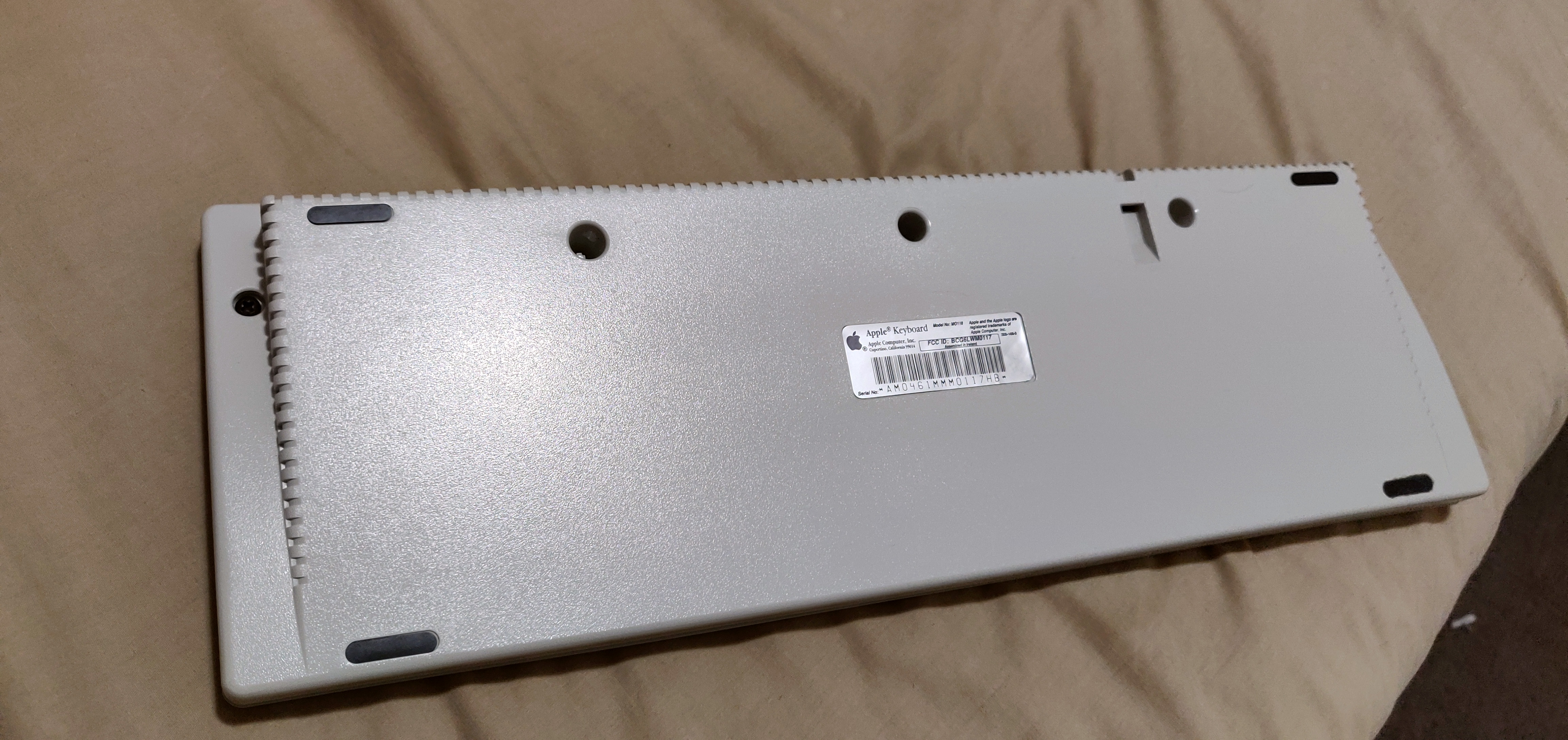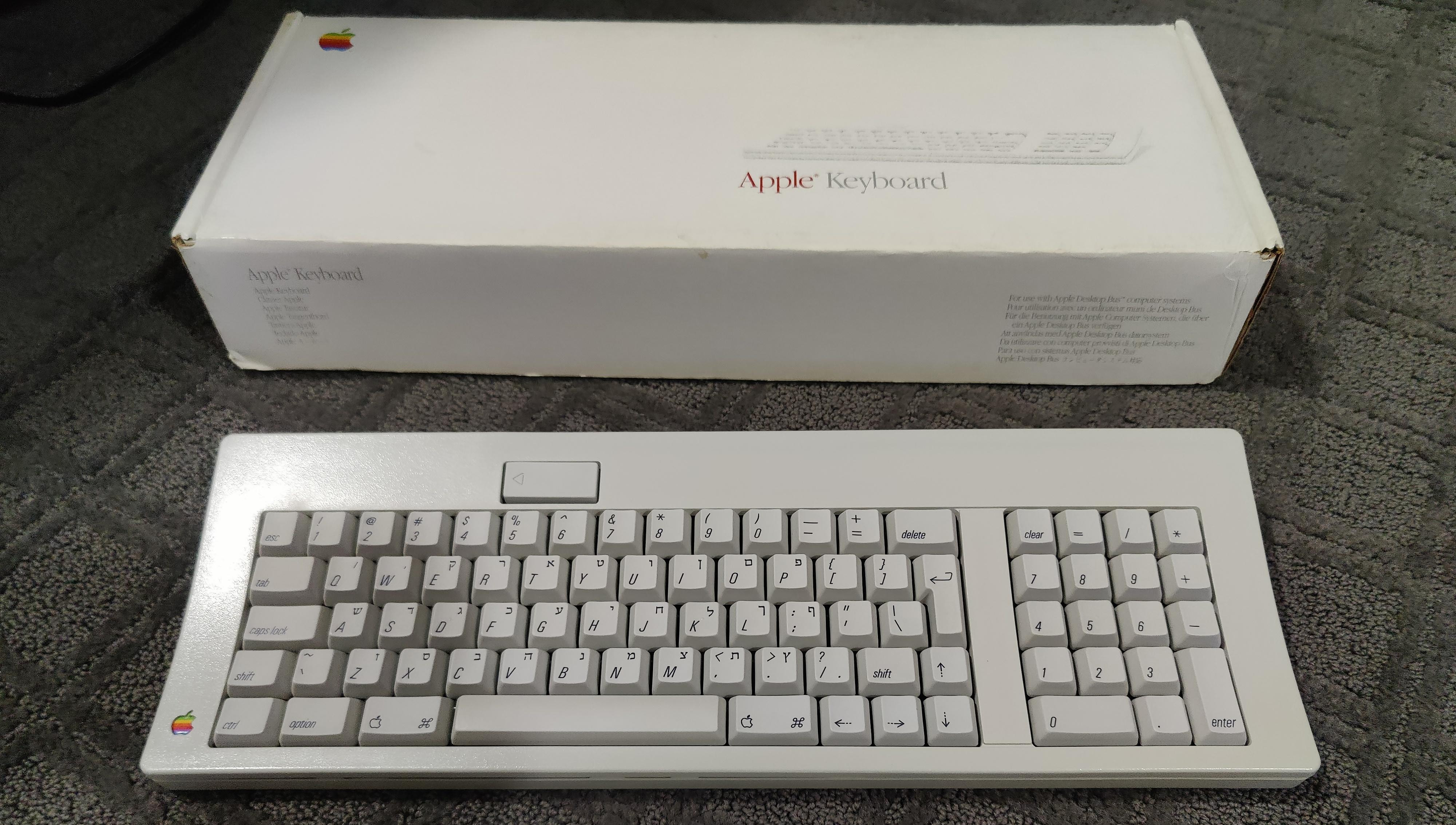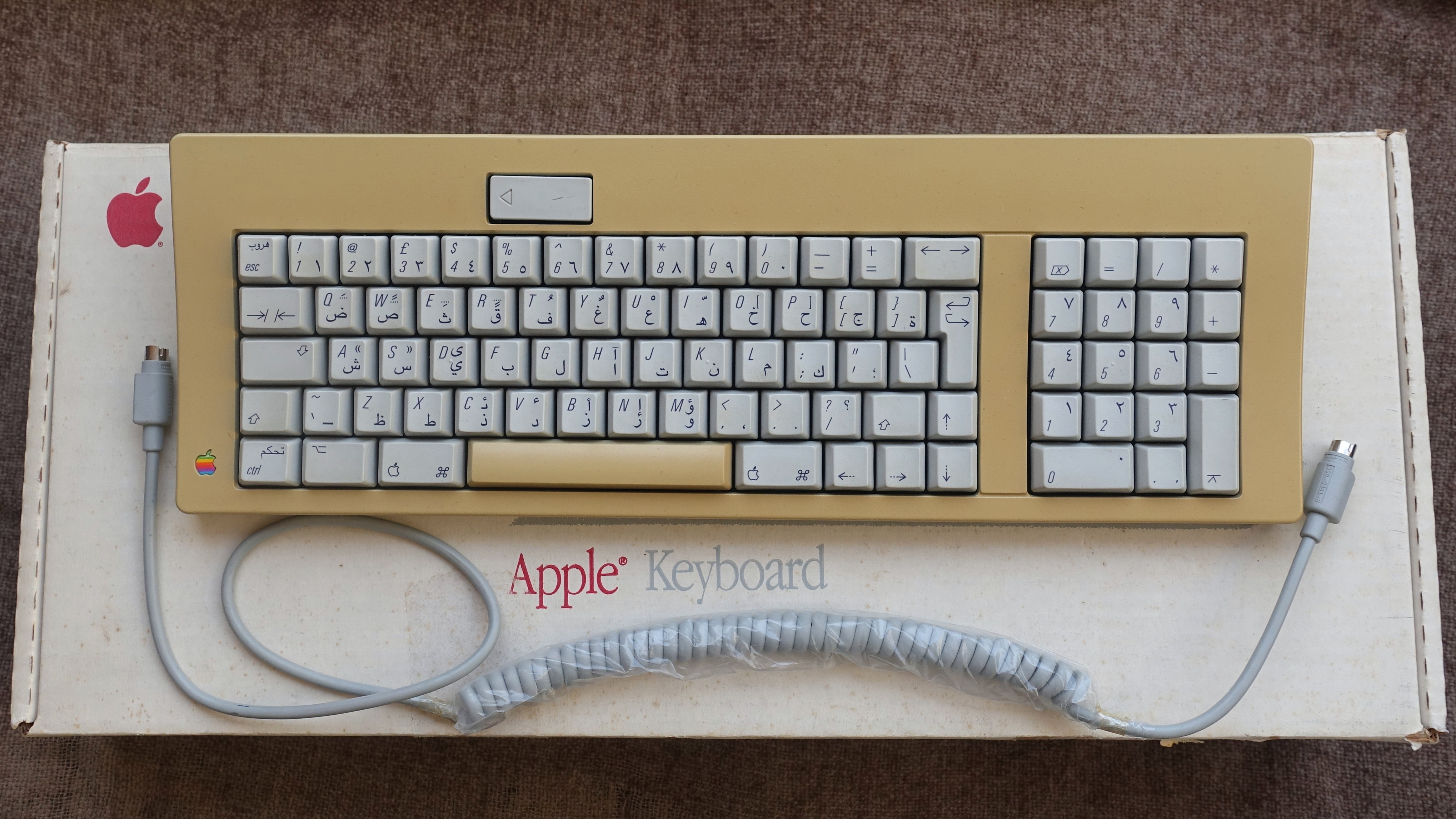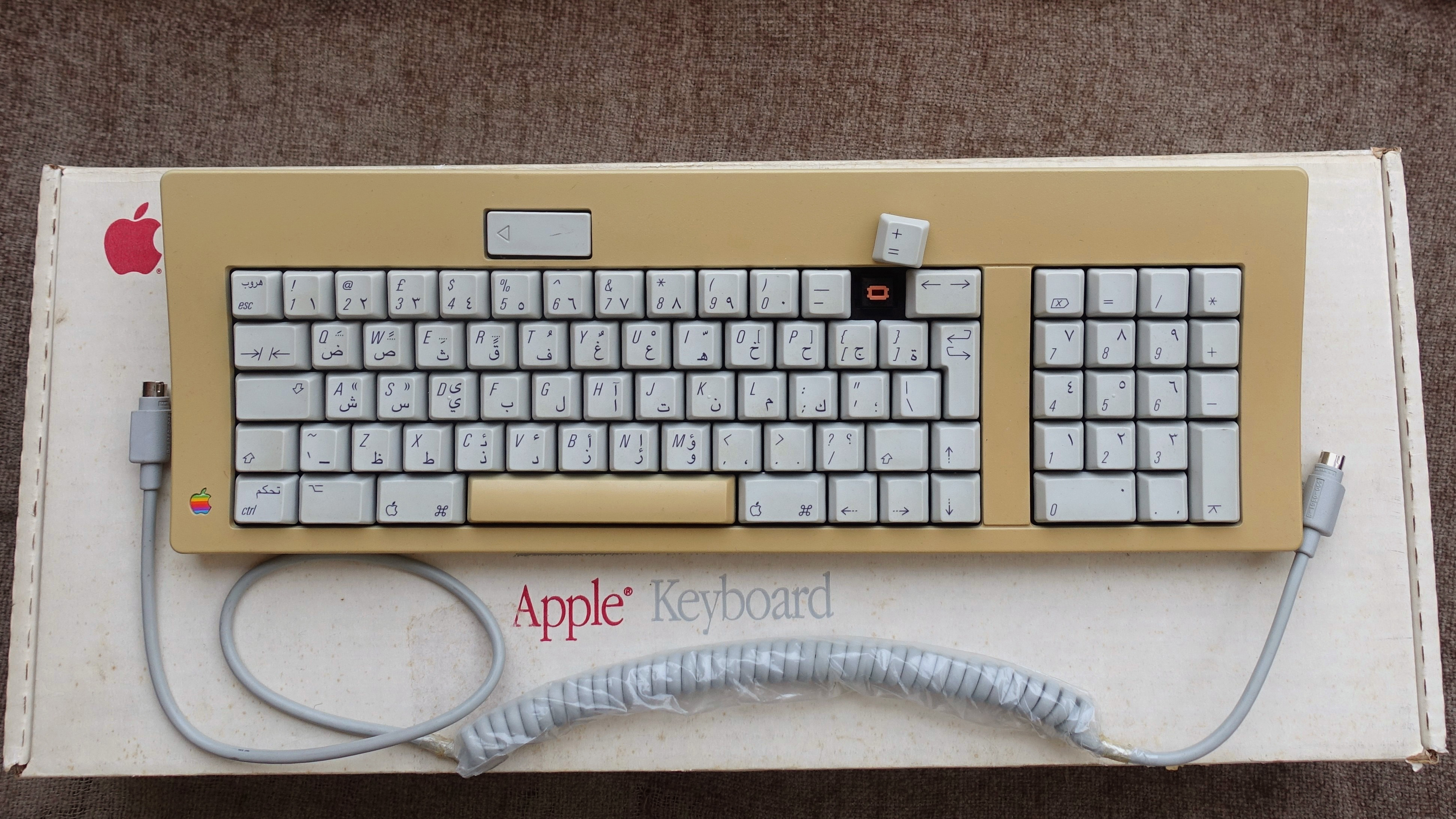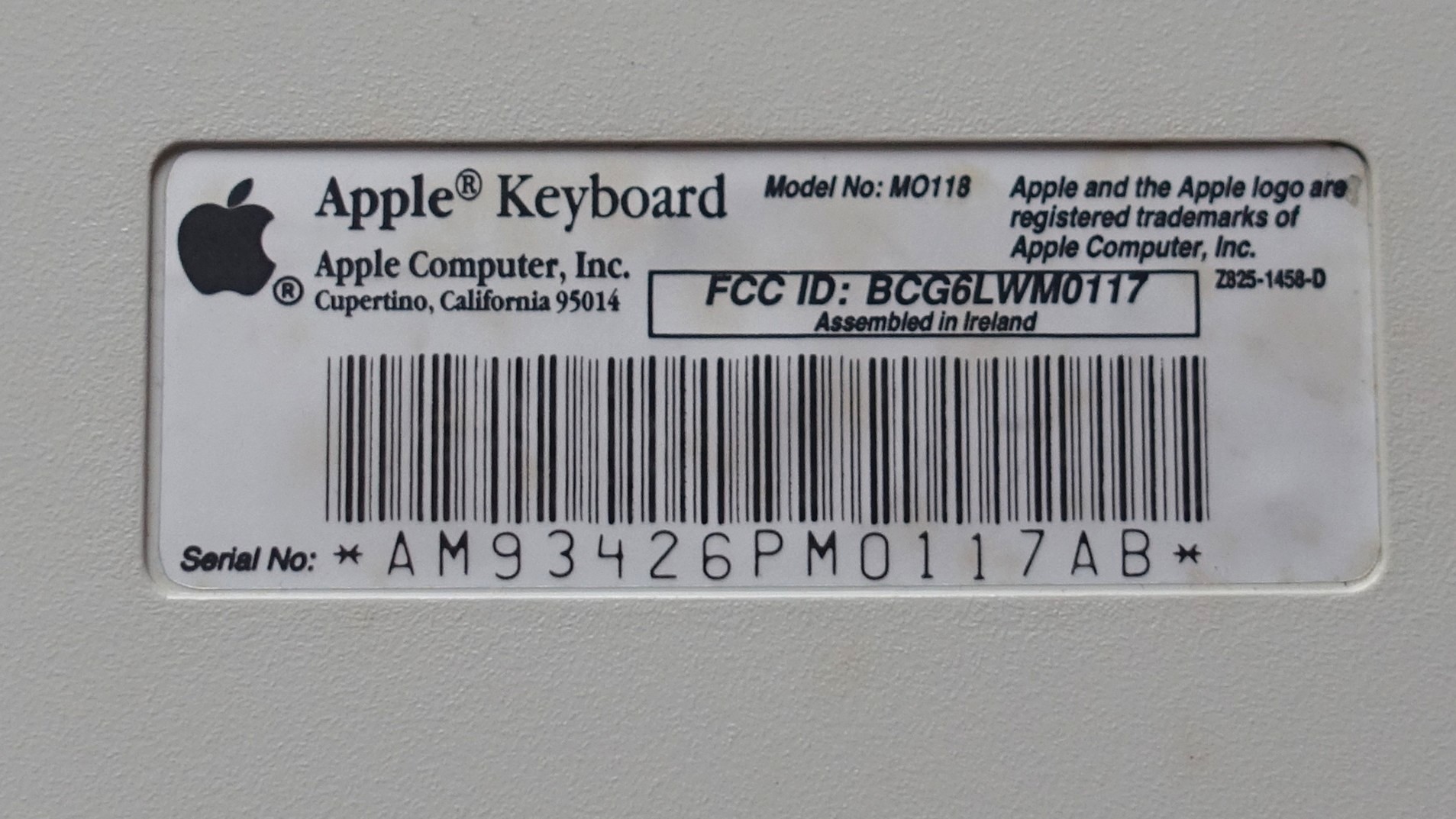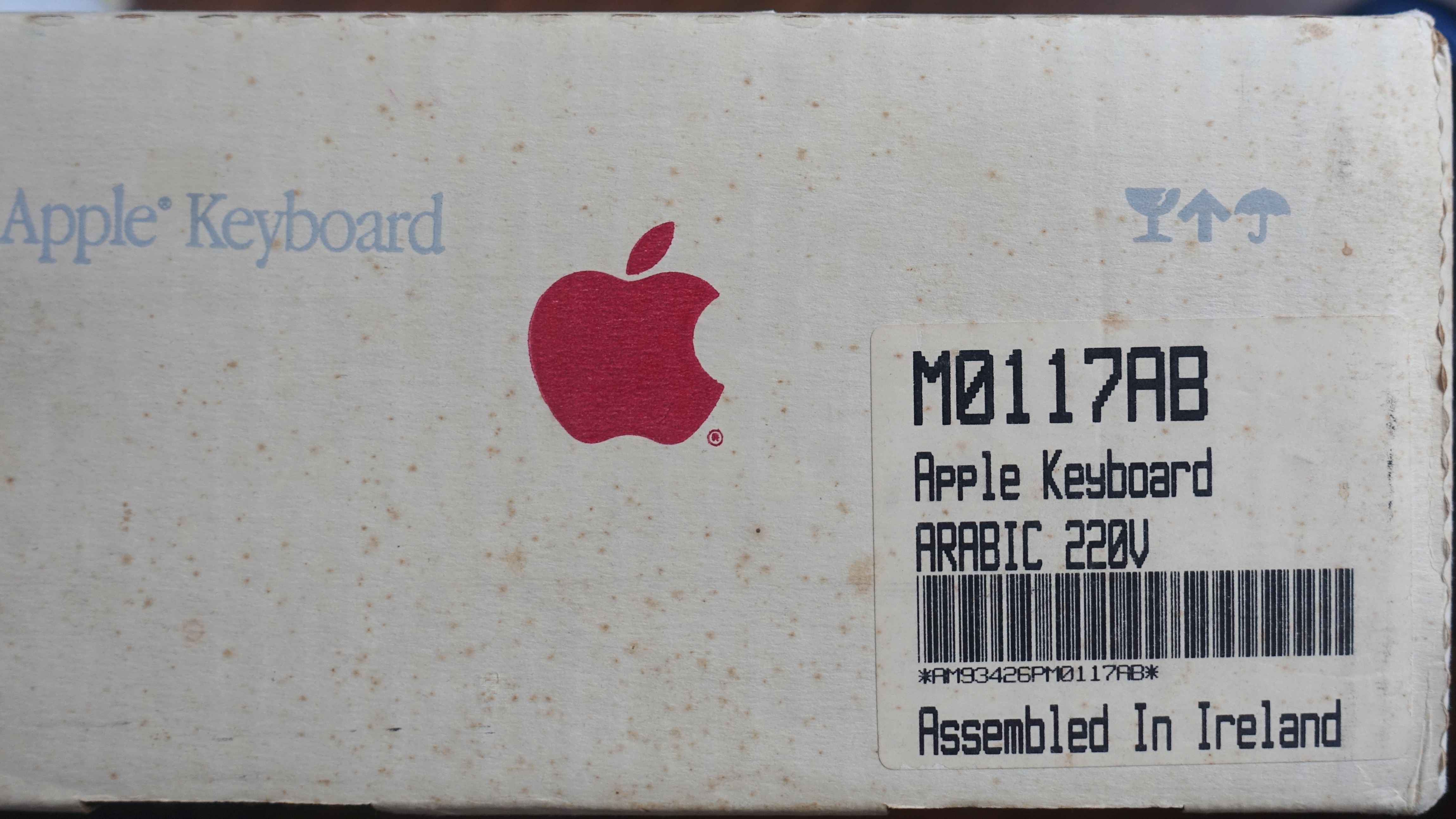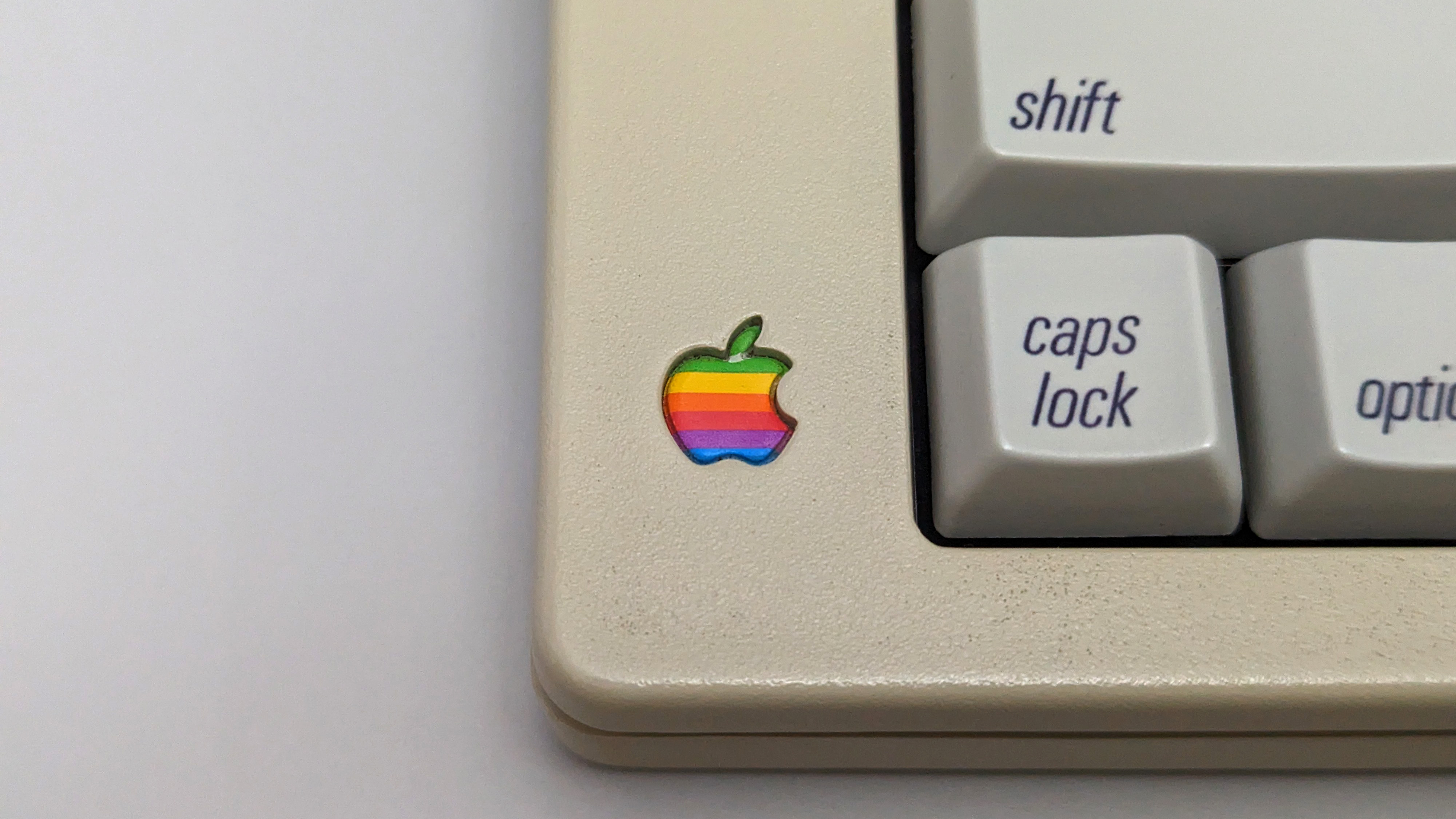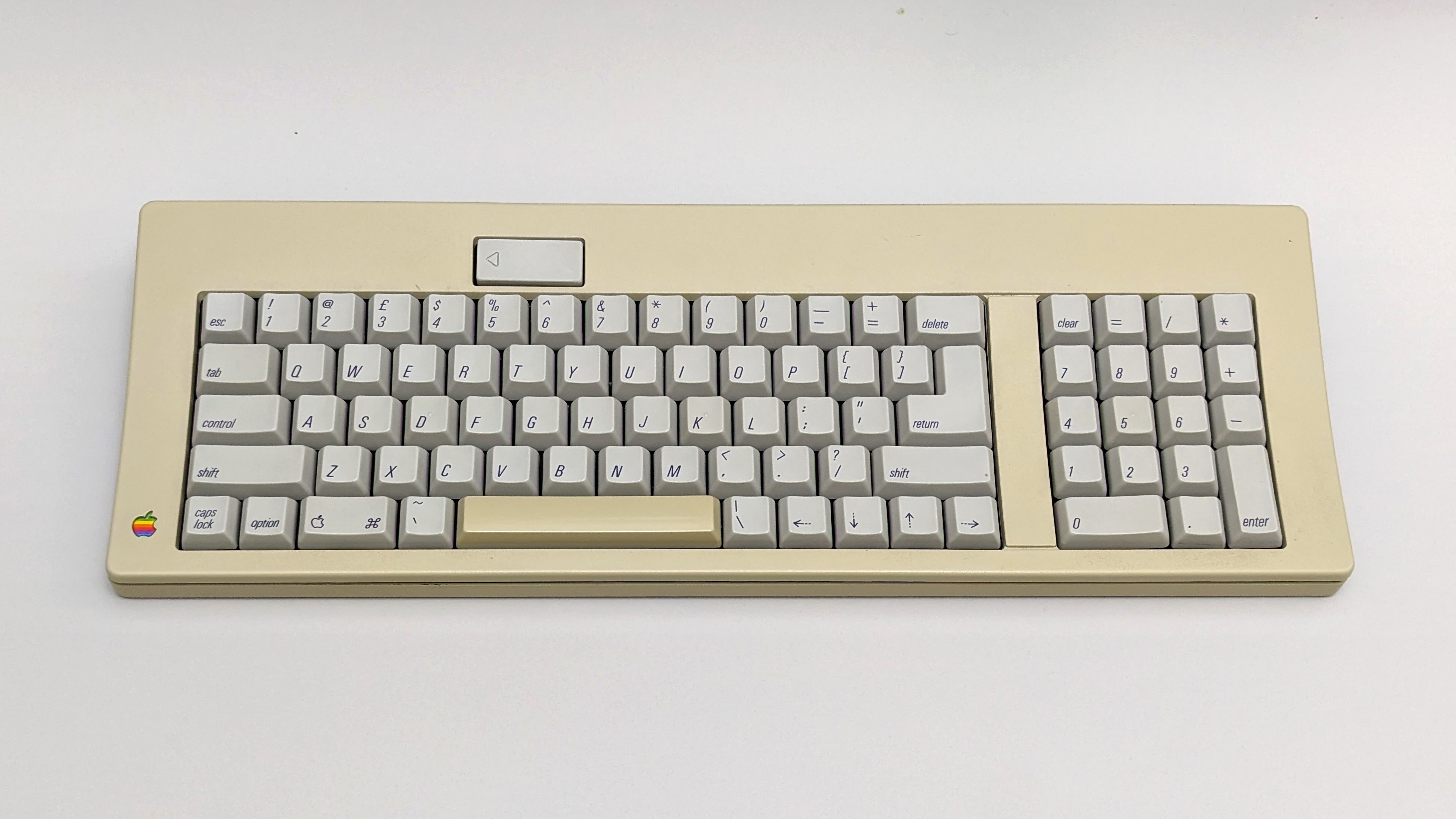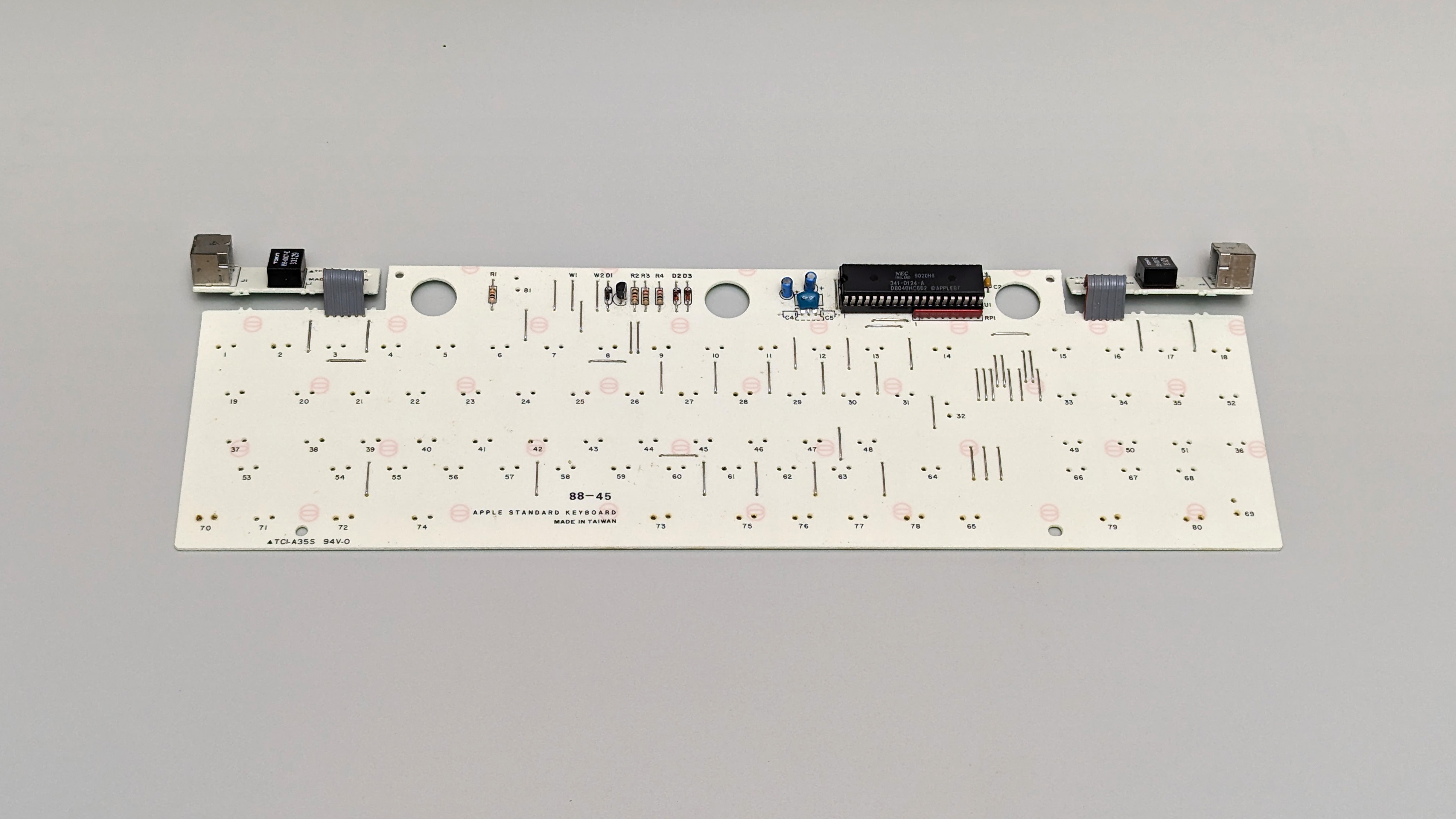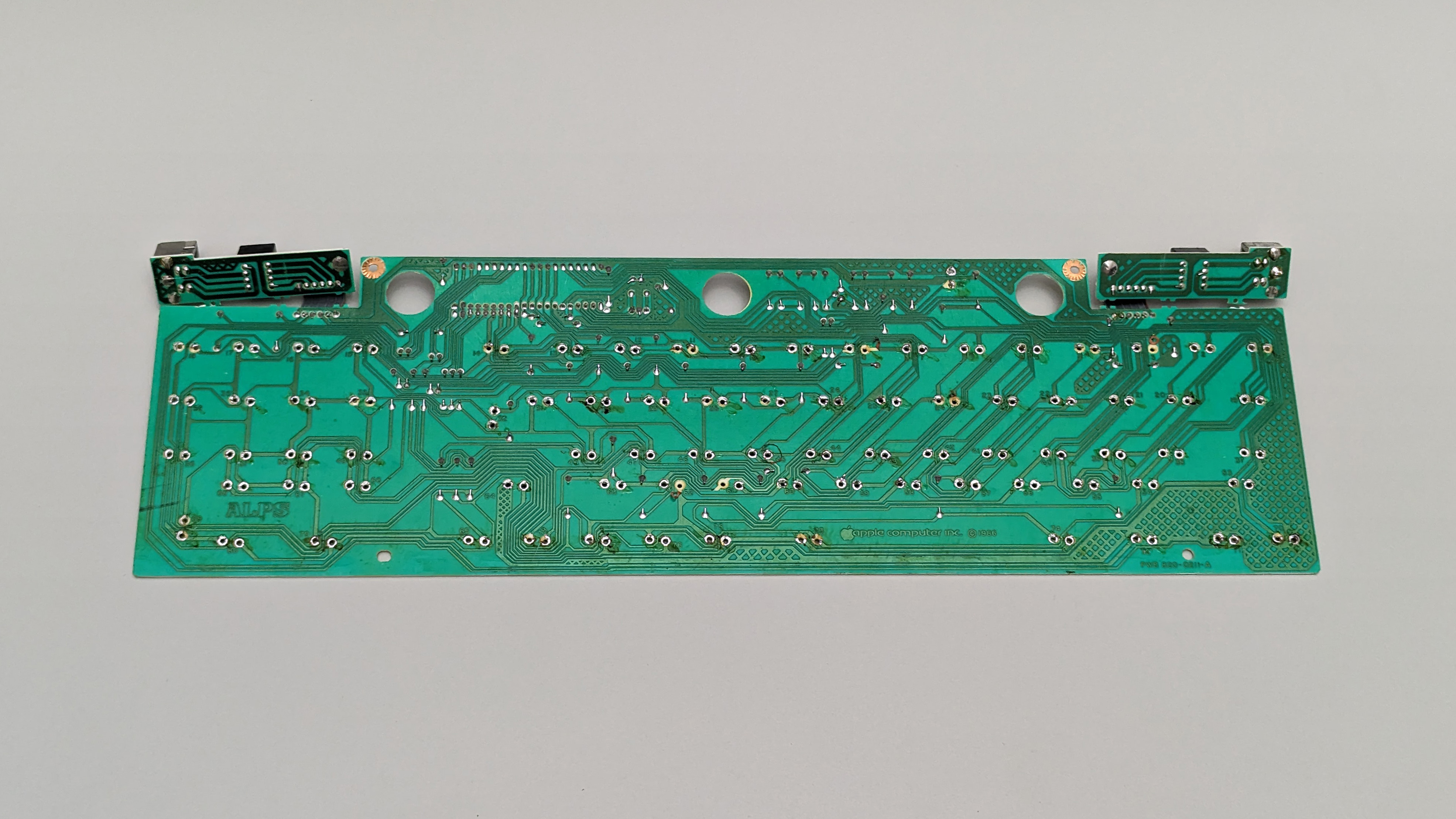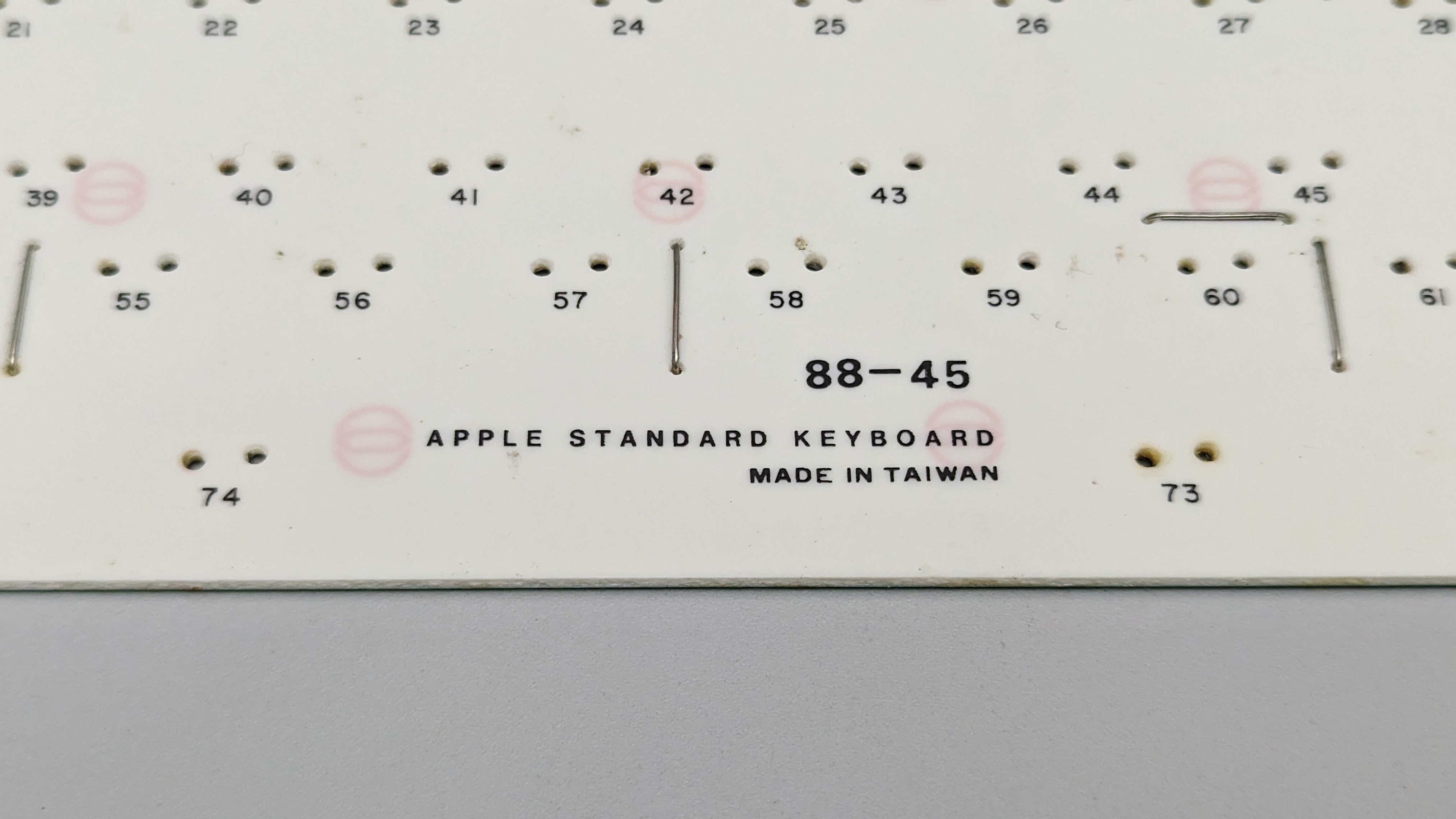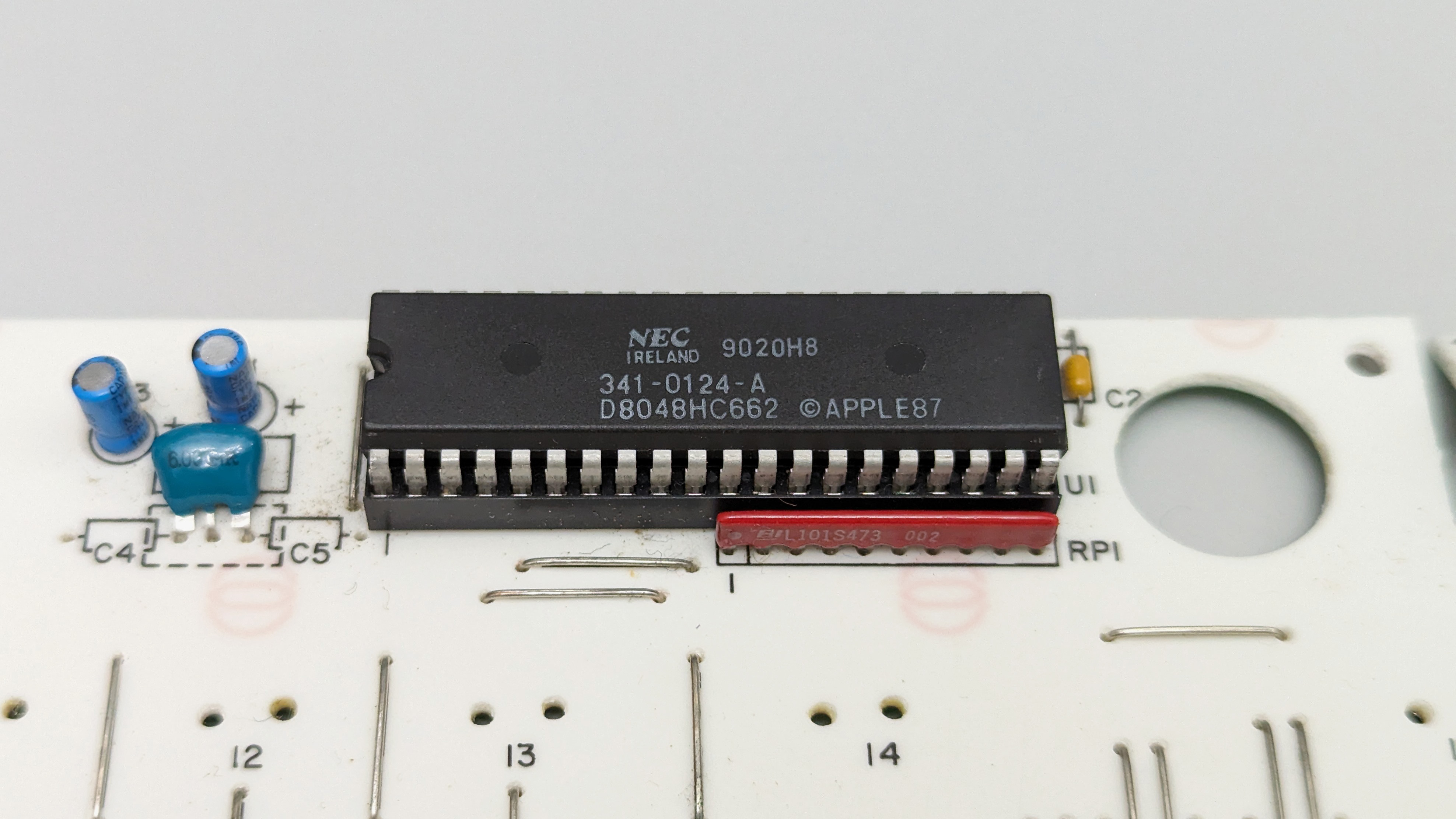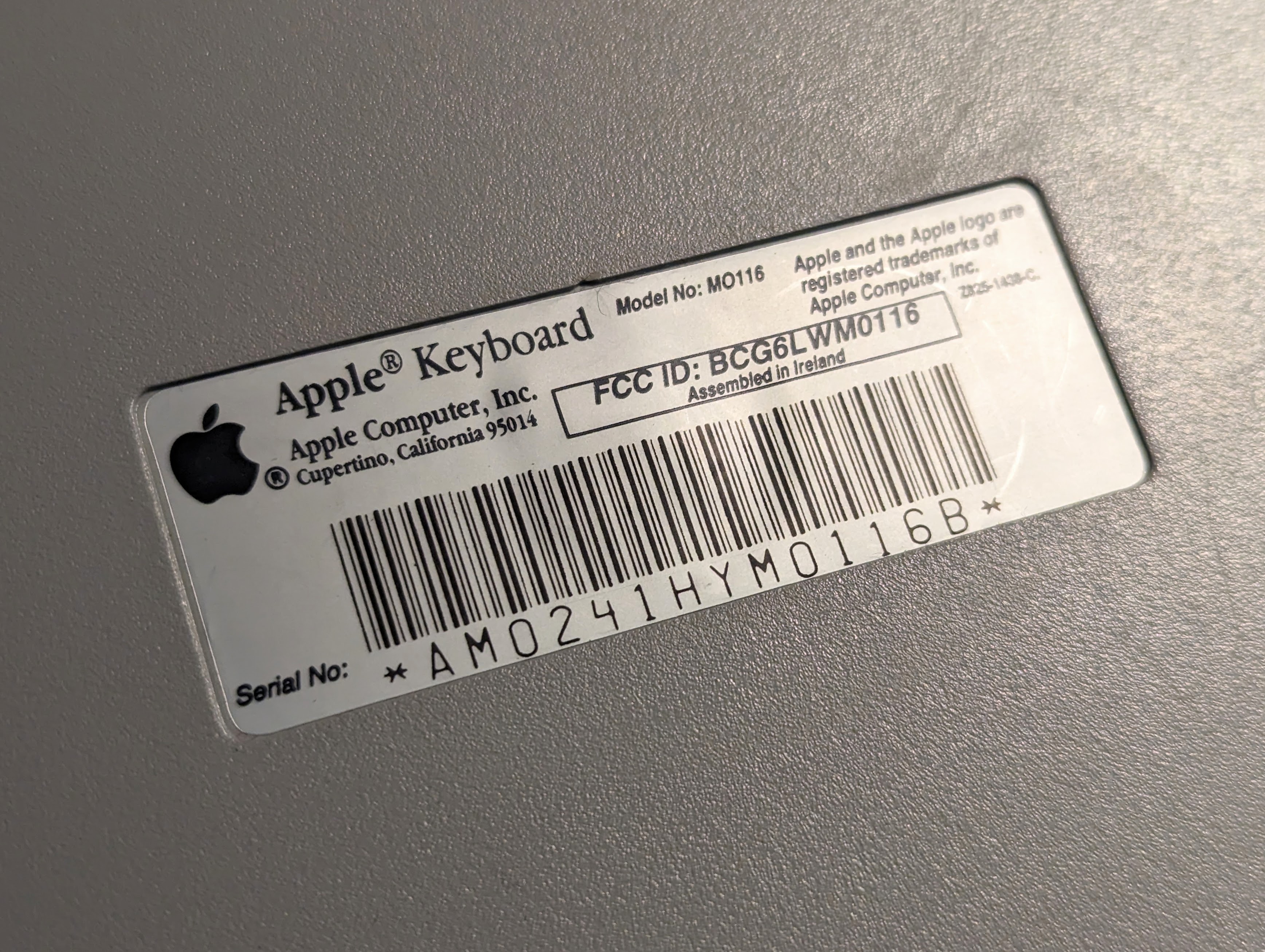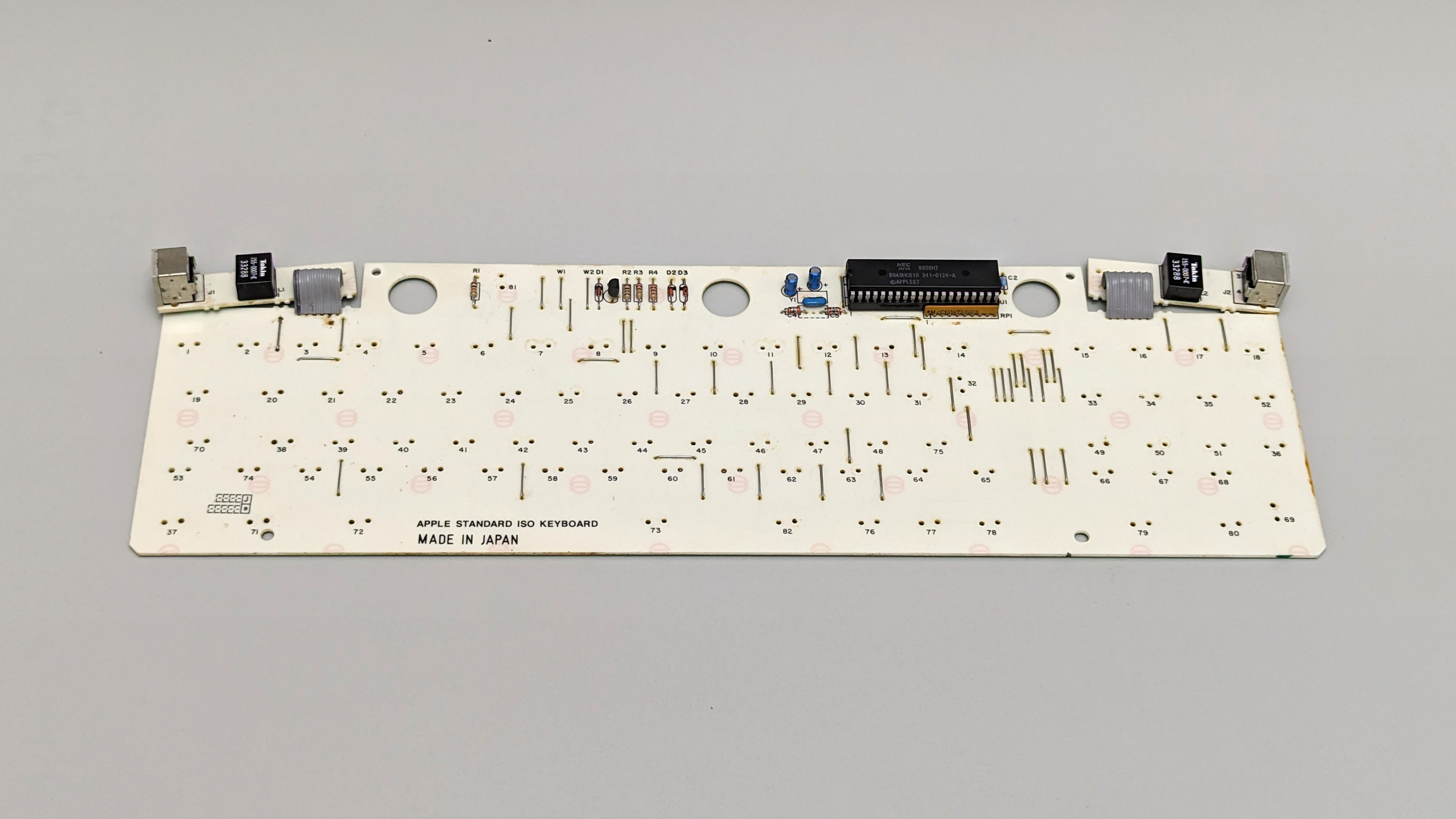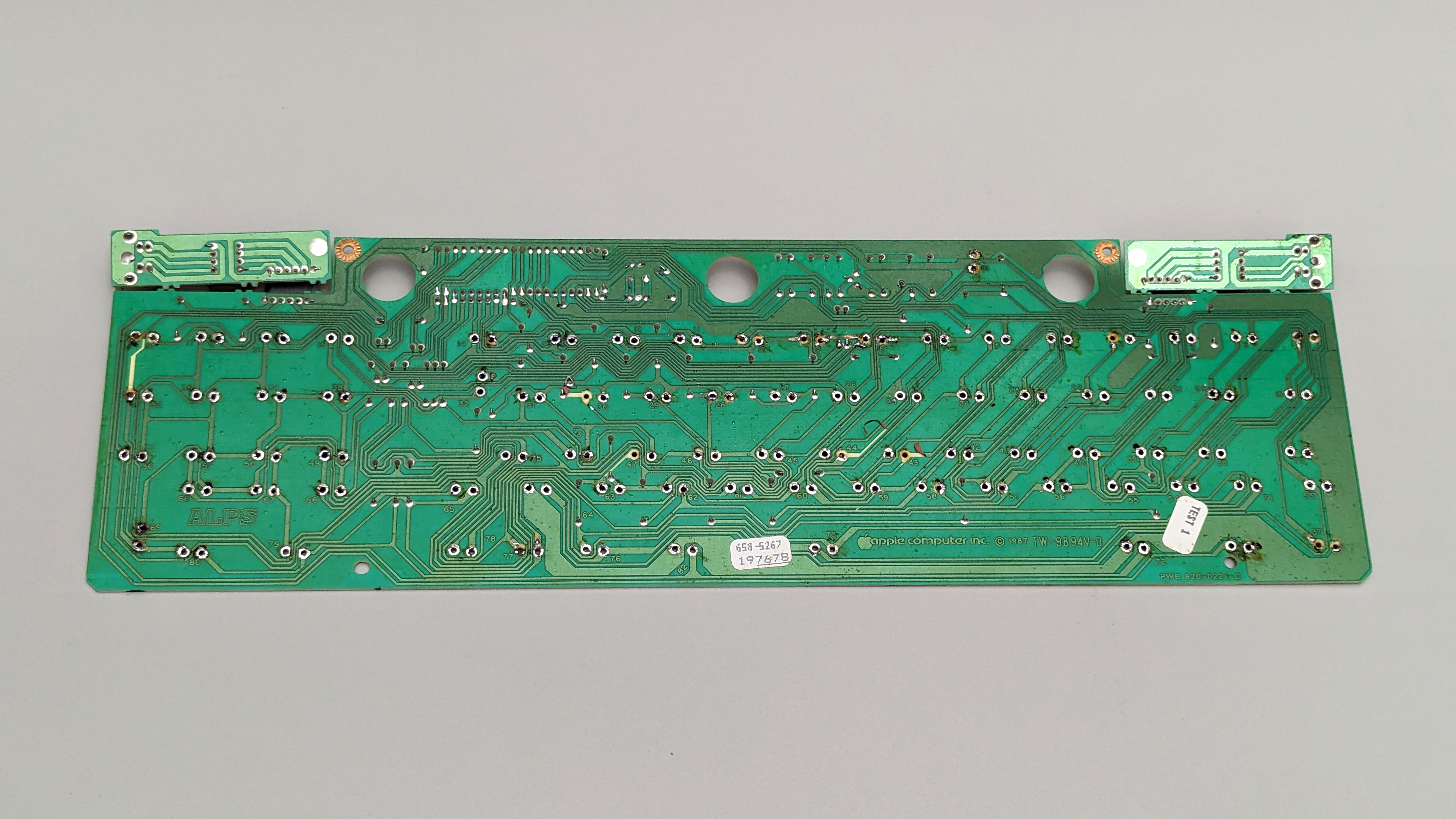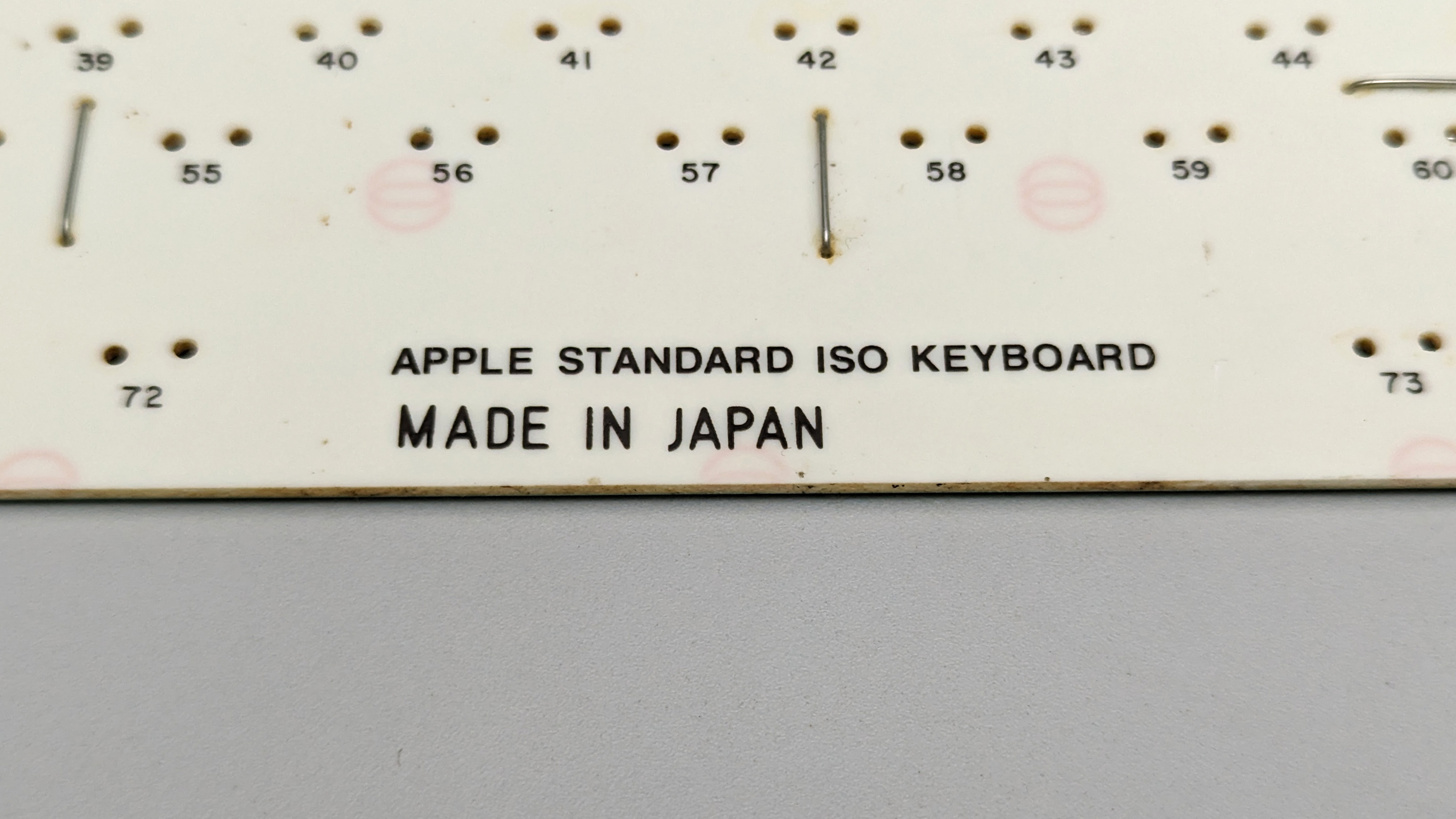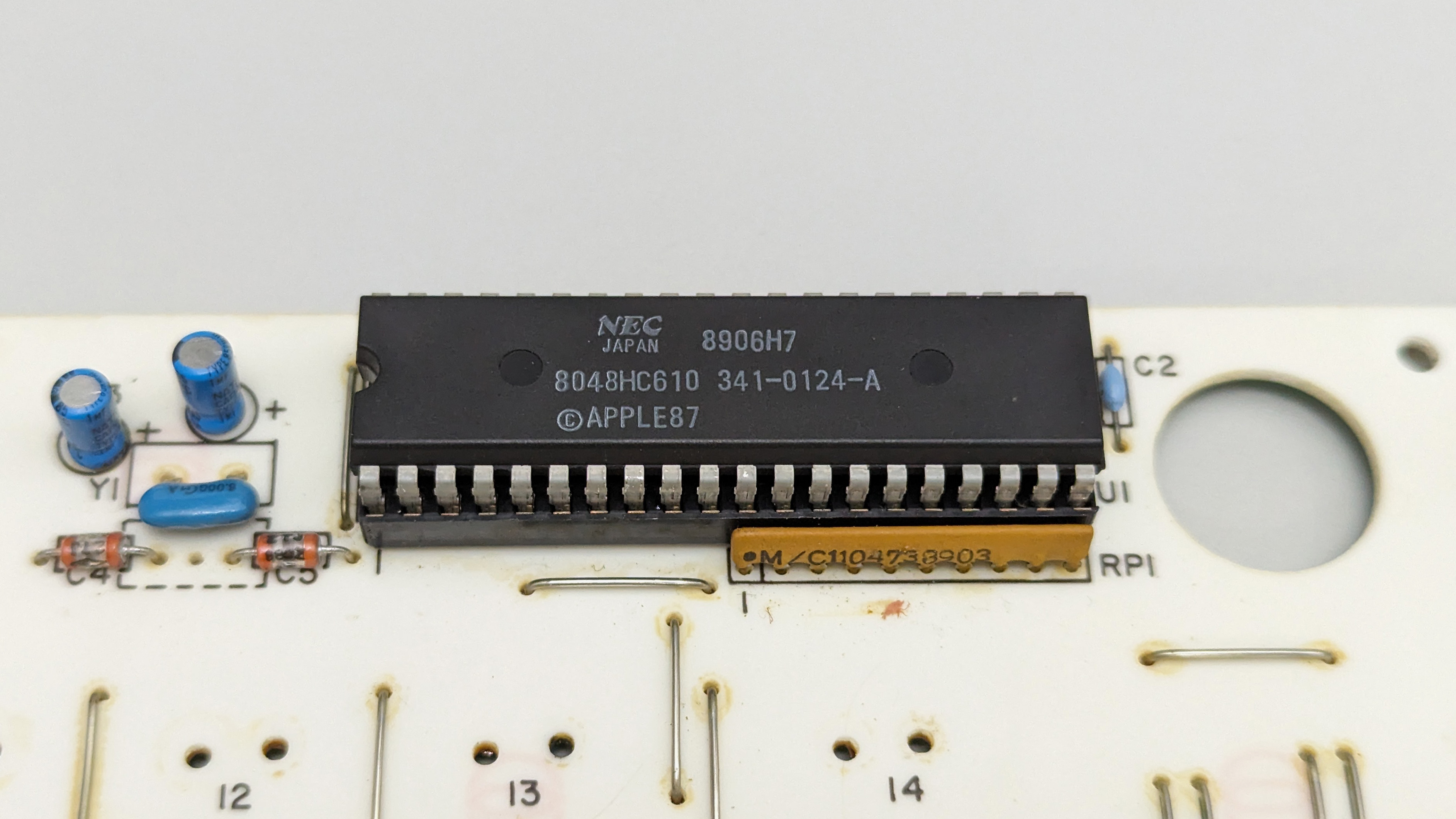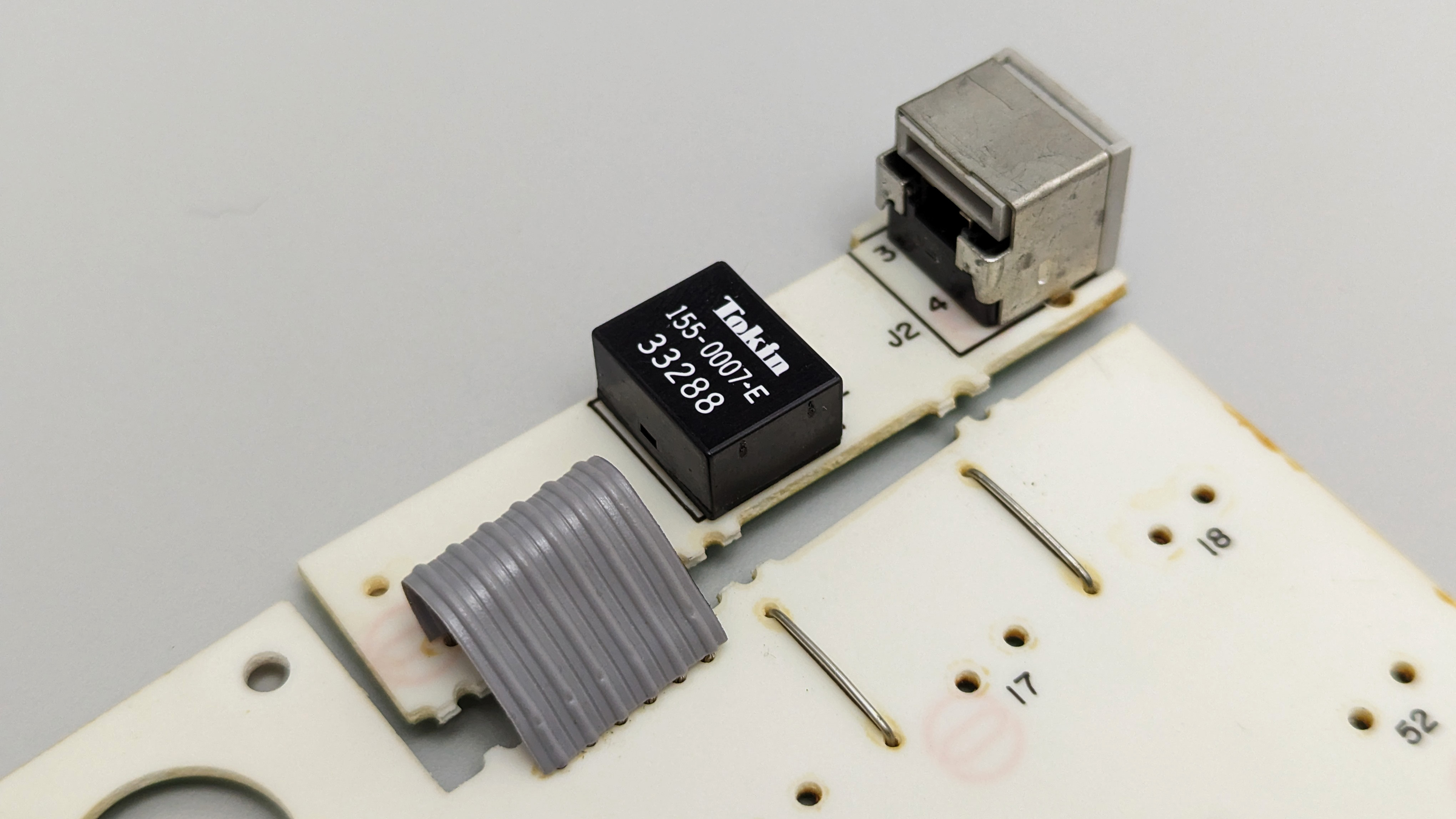Table of Contents
Apple Standard Keyboard
| Apple Standard Keyboard | |
 |
|
| Switch | Alps SKCM Orange Alps SKCM Salmon Alps SKCL Lock |
| Sense method | Metal contact |
| Protocol | ADB |
| Keycaps | Dye-sub PBT |
The Apple Standard Keyboard was introduced by Apple in 1987 alongside the Macintosh II and Macintosh SE computers. The example in the infobox, an M0116, was manufactured in 1990 in Ireland.
Description
The Apple Standard Keyboard shares a lot of traits with the Apple Extended Keyboard, which served as the full-size alternative during their years of production. Although both keyboards were introduced simultaneously, the Apple Standard Keyboard was advertised as the more affordable option at $129.1)
Construction
Case & Internals
The Apple Standard Keyboard is easily identified by its unique compact aesthetic, recognized by its simple swooping shape along with a “ridged” appearance on the sides of the bottom case. The case is made entirely in ABS plastic with an average thickness of 3.4mm2), making it a fairly sturdy chassis, but it's worth mentioning that the corners are still susceptible to cracks and chips. Additionally, the ABS plastics used in Apple keyboards of this era had a tendency to yellow more rapidly than those found in other keyboards.
The case is divided into two halves, a top and bottom-case, as well as the internal assembly. The top-case is secured by 3 screws positioned at the back, along with 4 plastic clips underneath the lip.
Regarding serviceability, the entire keyboard can easily be disassembled, but newcomers may encounter some confusion during reassembly. The steel mounting plate must first slide into the 4 thin slits at the lip of the bottom-case before the upper-case can be fully closed. The photos below demonstrate the following:
Measuring at 1.2mm3) in thickness, the steel mounting plate is relatively average and doesn't possess any notable characteristics.
Switches
The Apple Standard Keyboard came equipped with either Alps SKCM Orange or its successor, the Alps SKCM Salmon.
The Caps Lock key is always replaced by an Alps SKCL Lock switch. However, the position of the Caps Lock key can vary between the M0116 and M0118 variants.
Keycaps
The keycaps, made primarily from PBT plastic, feature an oblique dye-sublimated fontface, excluding the spacebar which was made in ABS plastic. These keycaps boast a unique profile exclusive to Apple keyboards of that era. Peculiarly, the thickness of these keycaps is non-uniform, with all sides measuring at 1mm, except for the rear wall, which is slightly thicker at 1.5mm.
When paired with the thick all-plastic case, these keycaps contribute to a sound signature that is generally perceived as pleasant.
Layouts & Locales
The Apple Standard Keyboard was offered in multiple layouts & locales to accommodate for different markets and audiences.
- The physical layout is determined by the keyboard's Model Number. (i.e. M0116, M0118)
- Non-English sublegends are determined by the last letters printed on the Serial Number in barcode-style rear labels.
- Albeit not common, non-English sublegends could be spotted on the M0116 layout, but they have an extra letter to the Model Number. (i.e. M0116C)
M0116
The most common layout used in the Apple Standard Keyboard takes heavy inspiration from the Standard ANSI keyboard layout, as observed by the full-size 2.25u Shift keys and shortened BAE key. Being the most common and readily-available layout, the term “M0116” in the keyboard community is often used as a blanket-term for all Apple Standard Keyboards.
Locales
| Model No. | Serial No. | Made in: | Layout | Notes | Source/Example |
| M0116 | — | U.S.A. | English (US) | Standard layout. | — |
| M0116 | …M0116B | Ireland | English (UK) | ANSI-like with just a £ symbol. | Documented in Gallery below |
| M0116C | — | U.S.A. | French Canadian | Found on second-hand market | |
| M0116J | — | U.S.A. | Japanese | Found on second-hand market | |
| M0116 | …M0116D | U.S.A. | German | Found on second-hand market |
- Interestingly, some Apple Extended Keyboards with the French Canadian layout could be spotted with an M0116C Model Number.4) The reason behind this anomaly is currently unknown, but it is speculated to be a printing error.
M0117/M0118
Most Non-English variants of the Apple Standard Keyboard featured an “M0118” Model Number, which is the ISO counterpart to the “M0116” Model Number. This physical layout features a shortened 1.25u Shift key on both sides, a shortened ISO-Enter key, and a simplified bottom-row.
All official FCC IDs & Serial Numbers contain an “M0117”, but the layout is collectively referred to as an “M0118” in the keyboard community due to the Model Number.
Locales
| Model No. | Serial No. | Made in: | Layout | Notes | Source/Example |
| M0118 | …M0117Z | Ireland | English | International English layout. | Deskthority Wiki |
| M0118 | …M0117AB | Ireland | Arabic | Documented in Gallery below | |
| M0118 | …M0117D | Ireland | German | Found on second-hand market | |
| M0118 | …M0117F | Ireland | French | Found on second-hand market | |
| M0118 | …M0117HB | Ireland | Hebrew | Documented in Gallery below | |
| M0118 | …M0117S | U.S.A. | Finnish Swedish | Deskthority Wiki | |
| M0118 | …M0117SF | Ireland | Swiss | Found on second-hand market | |
| M0118 | …M0117Y | Ireland | Spanish | Found on second-hand market | |
| M0118 | …M0117YU | Ireland | Yugoslavian | Deskthority Marketplace |
Additional Information
Hard-2KRO Limitation
In the majority of 2KRO keyboards, the user is free to press as many keys until a conflicting key in the matrix is pressed. As a result, most 2KRO keyboards have the potential to register more than two simultaneous key presses, with only certain combos blocked.
However, common at the time for Apple keyboards, the Apple Standard Keyboard came with a strict limitation of only 2 simultaneous key-presses, regardless of the respective keys' position in the matrix. This is likely done in the keyboard's factory firmware, as the Apple Standard Keyboard's matrix is observed to be capable of normal 2KRO behavior.
This makes the Apple Standard Keyboard rather unsuitable for tasks which may require complex key-combos, such as with gaming.
Gallery
Apple Standard Keyboard (M0116, US)
Apple Standard Keyboard (M0117HB, Hebrew)
Apple Standard Keyboard (M0117AB, Arabic)
Apple Standard Keyboard (M0116B, UK)
- Dated 1990, Week 206)
- FCC ID: BCG6LWM0116
- Serial Number: AM0241HYM0116B
Note: Arrow keys were swapped around.
Apple Standard Keyboard (M0117D, German)
- Dated 1989, Week 67)
- Missing FCC ID
- Serial Number: AM92007JM0117D
